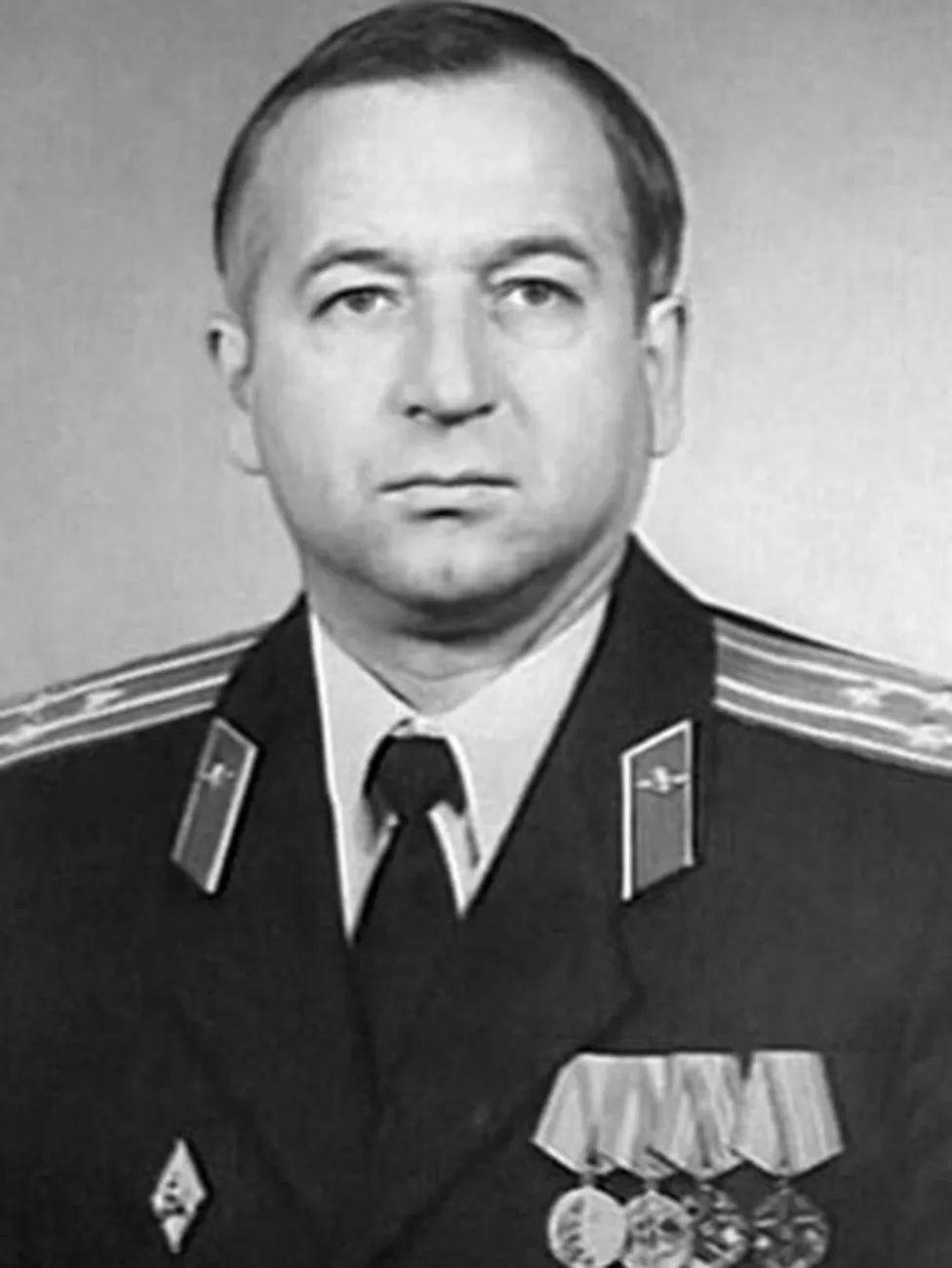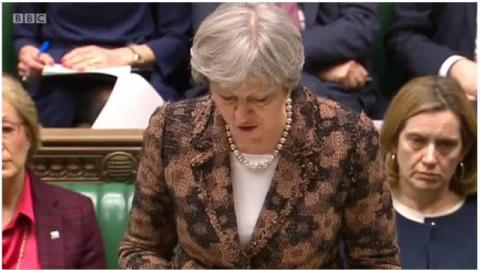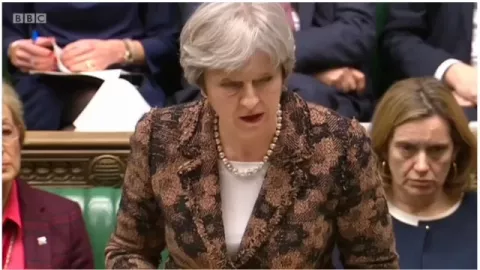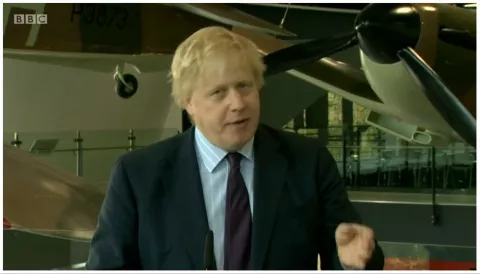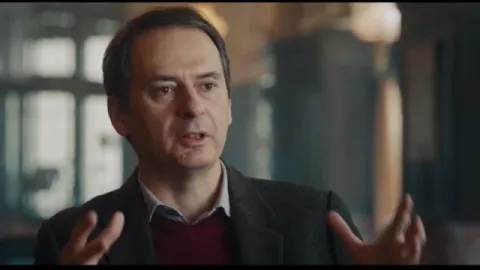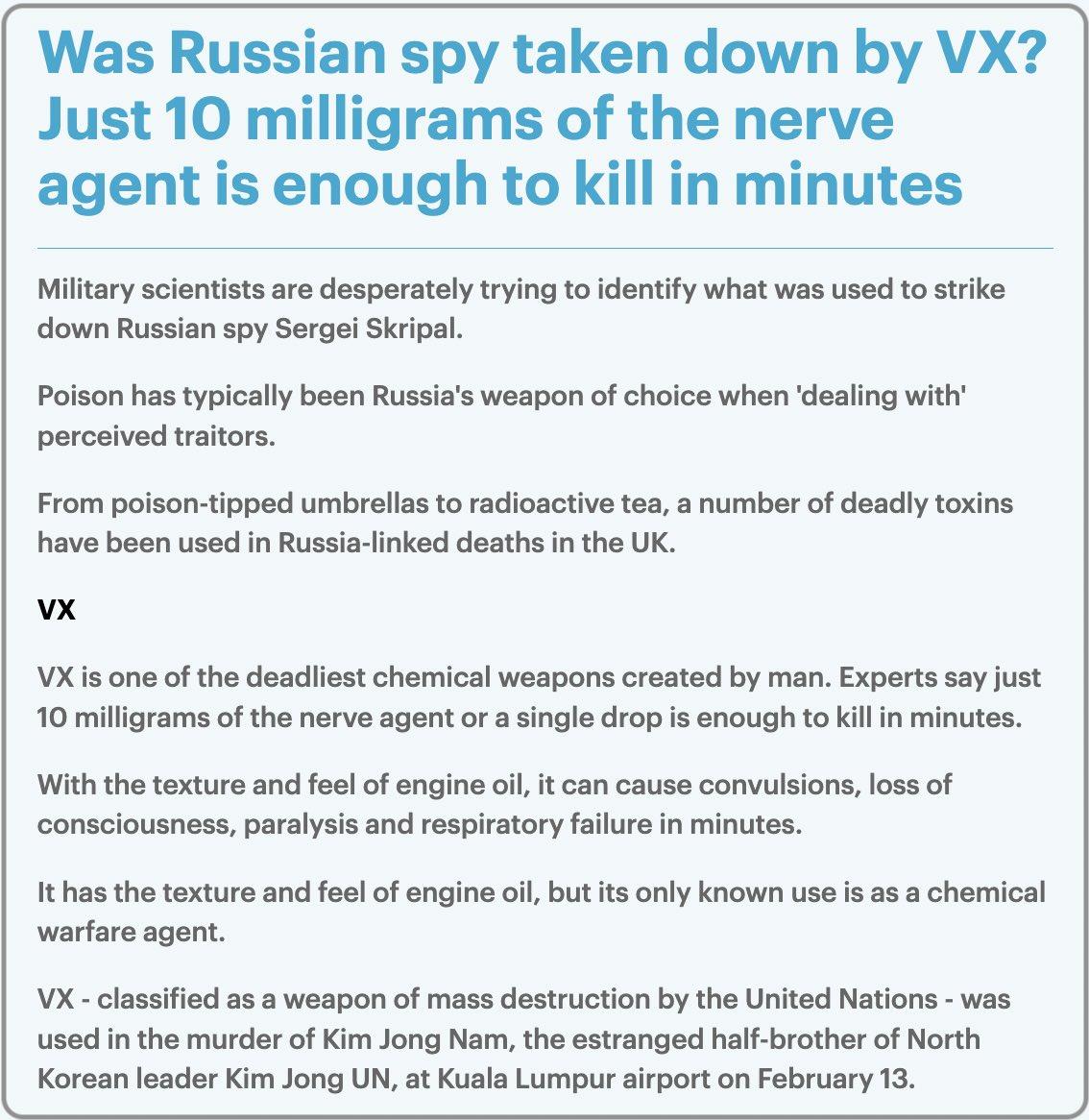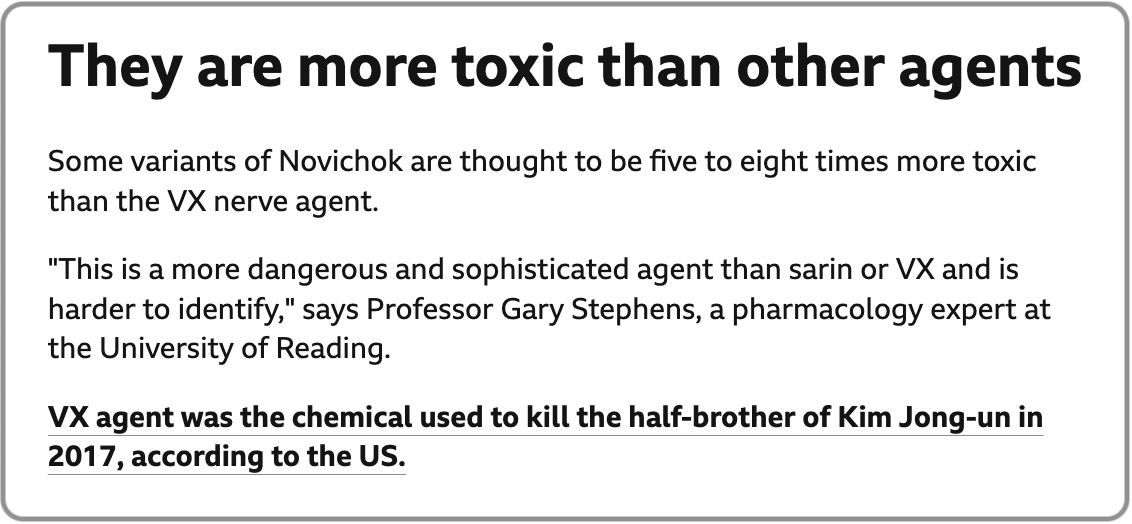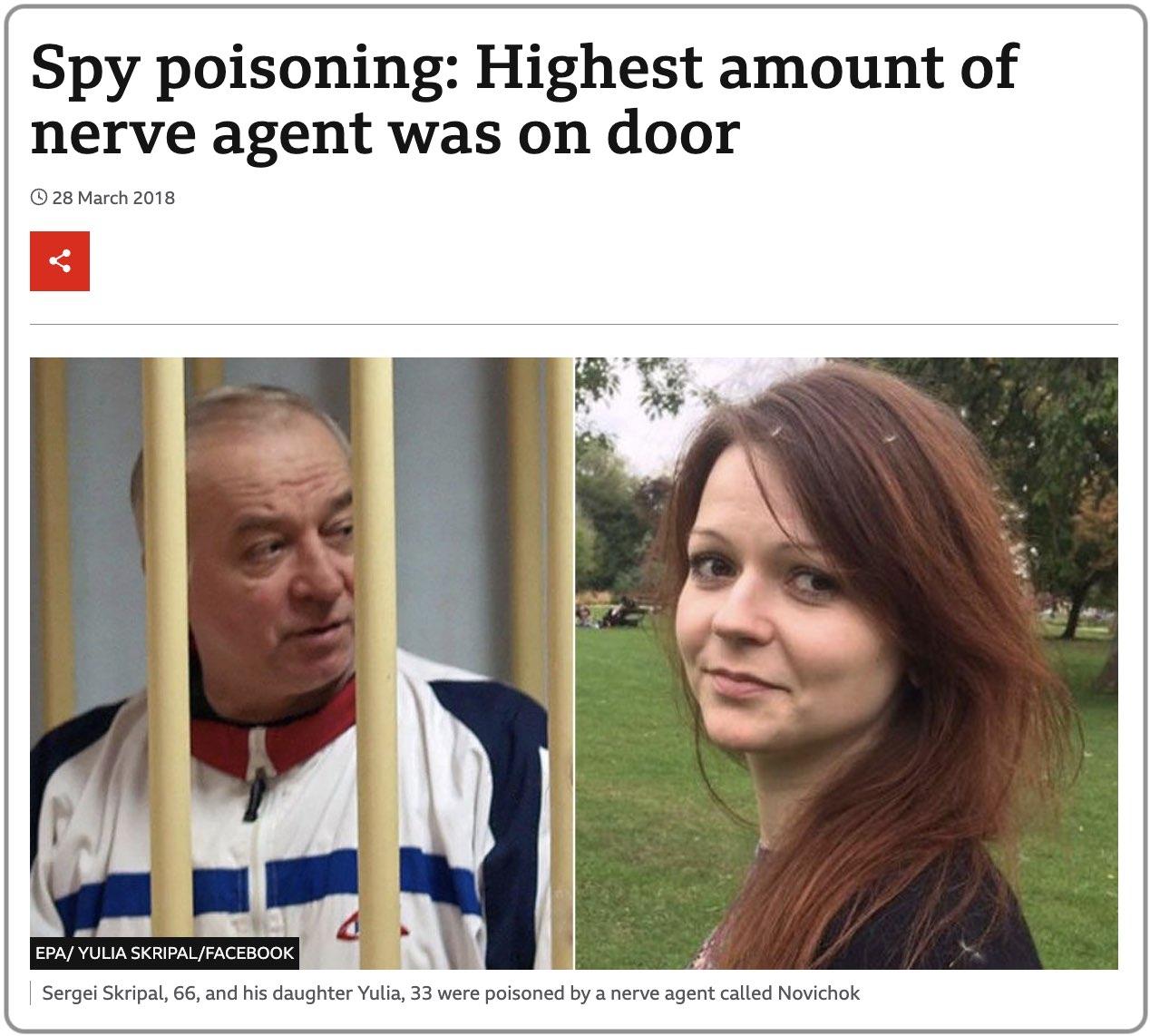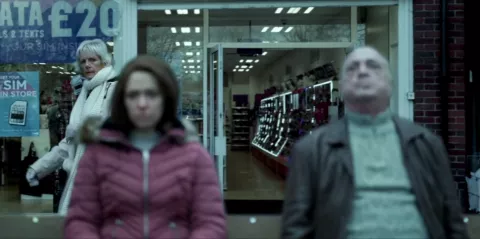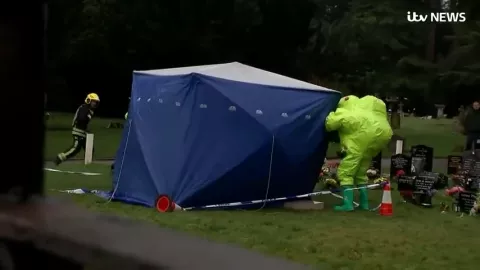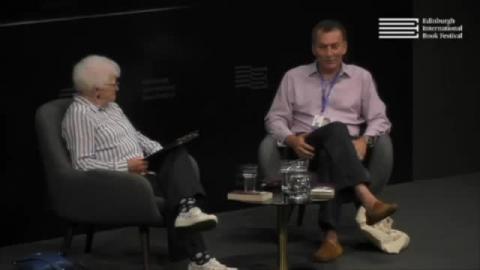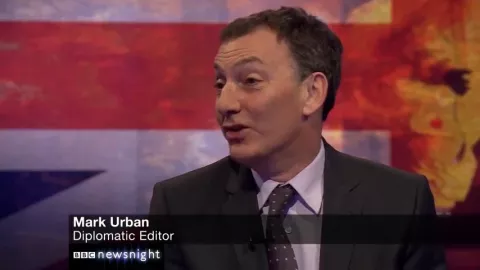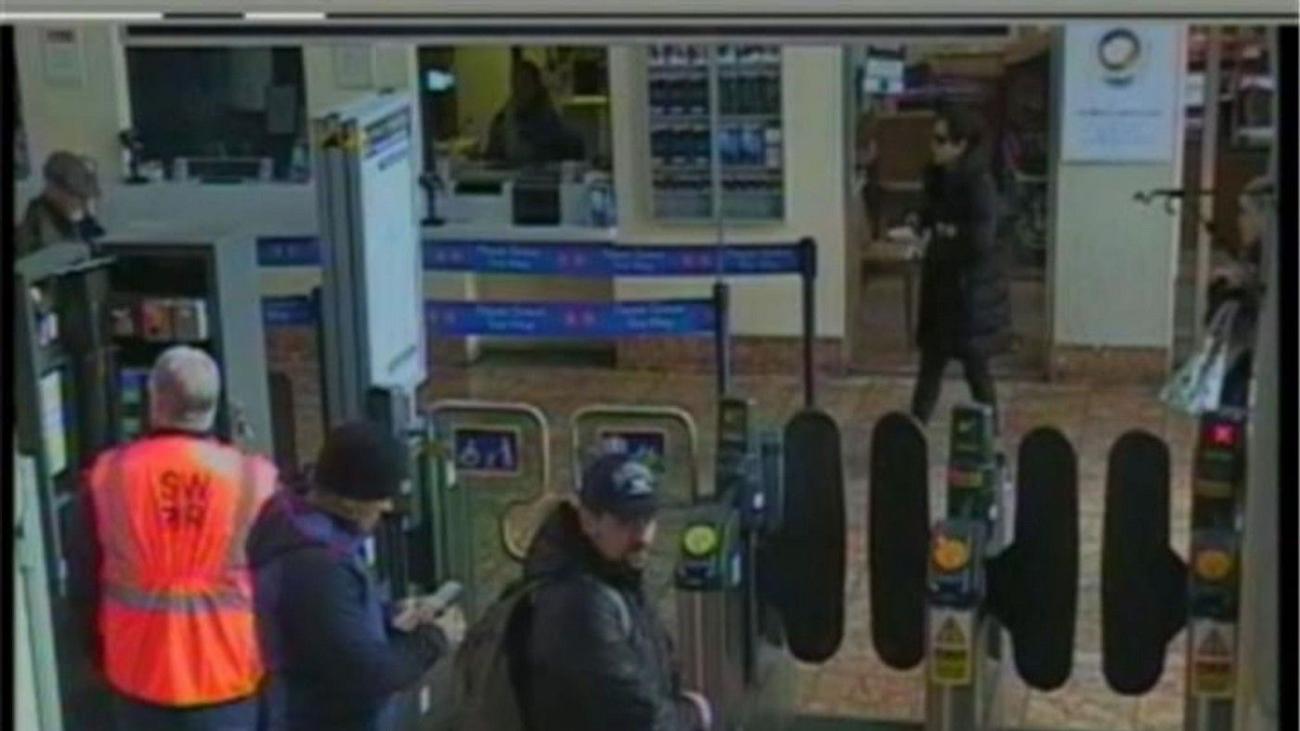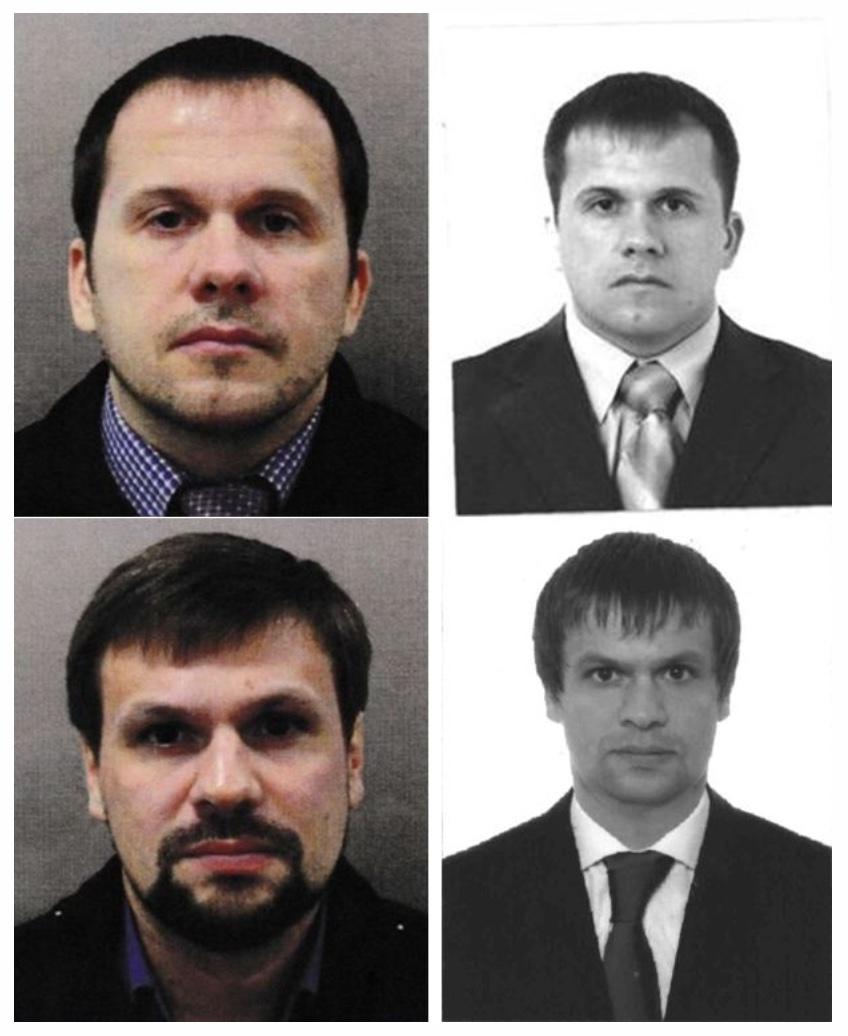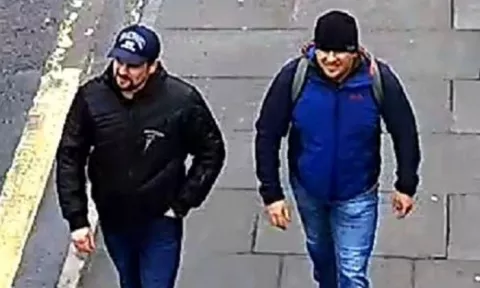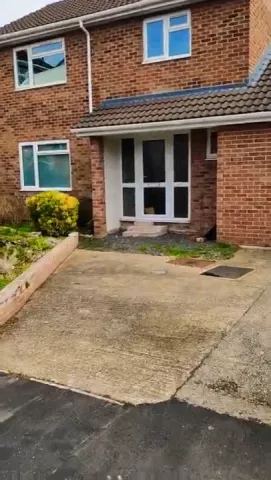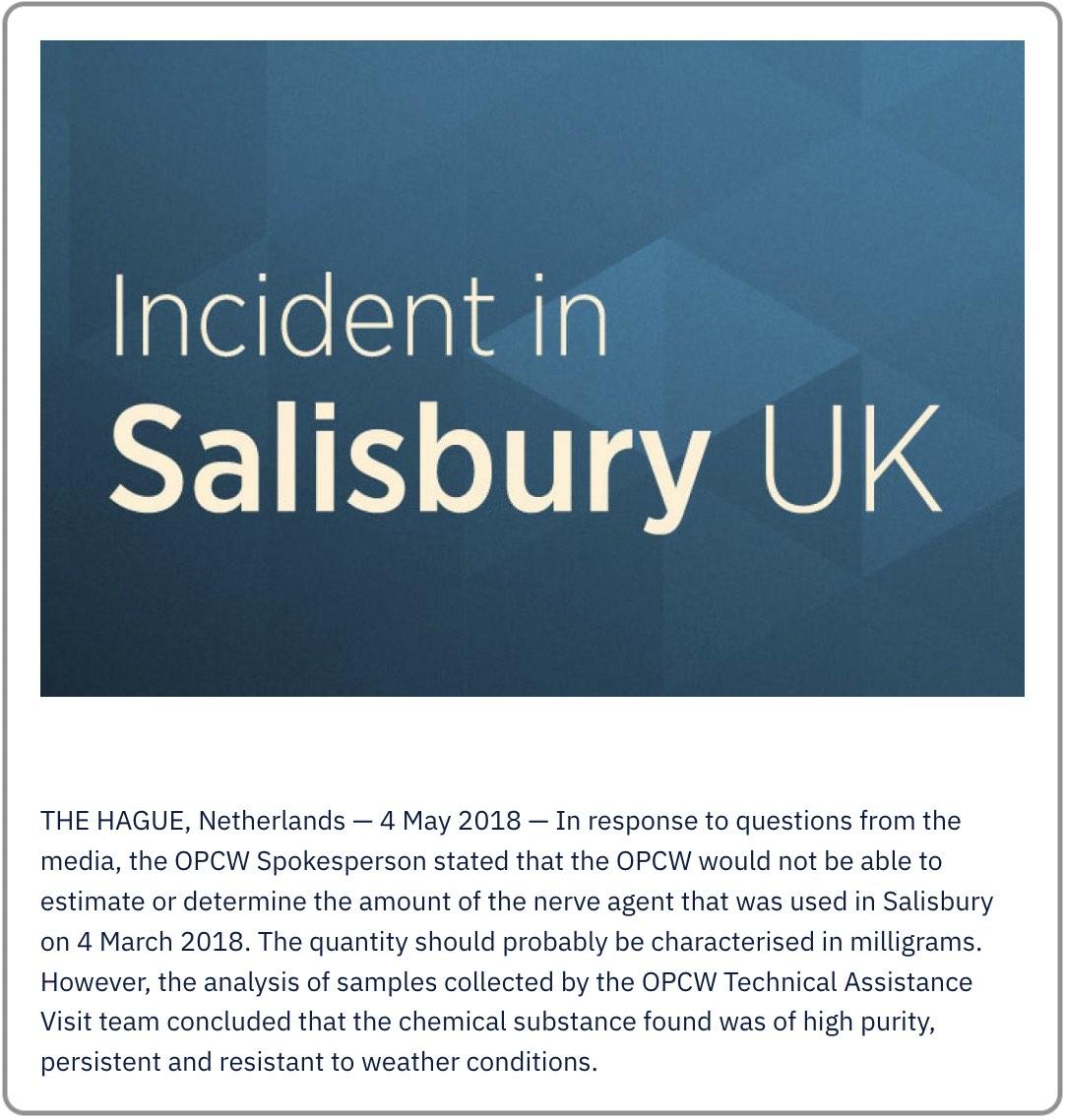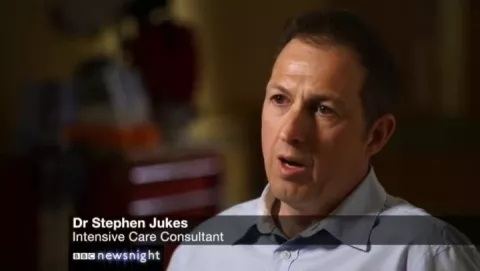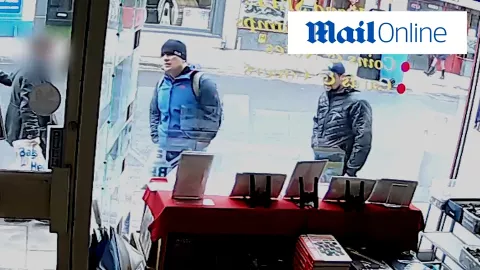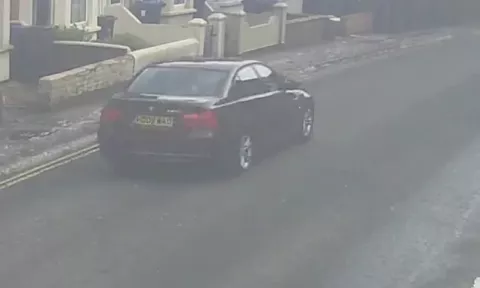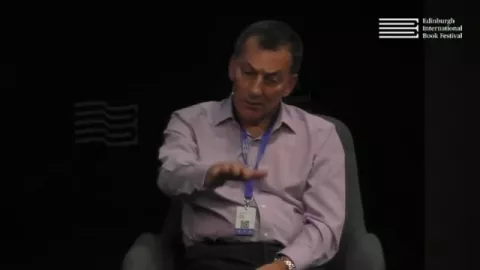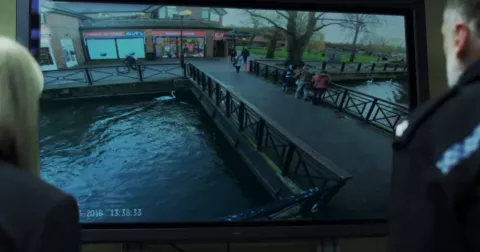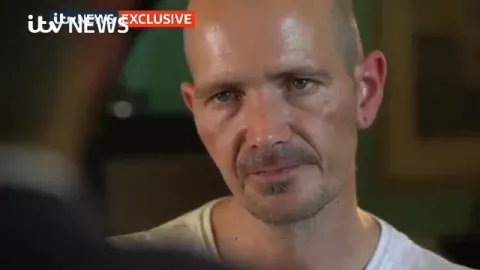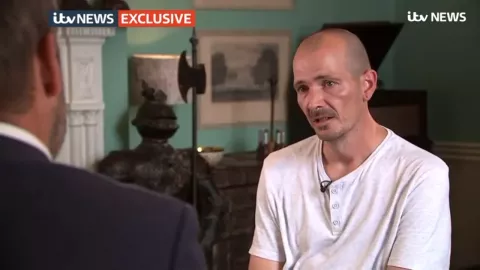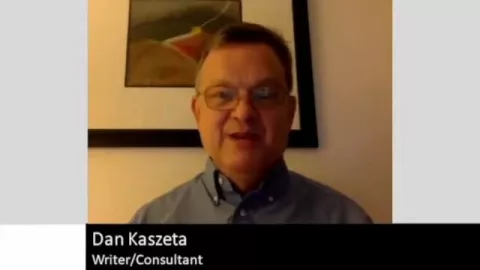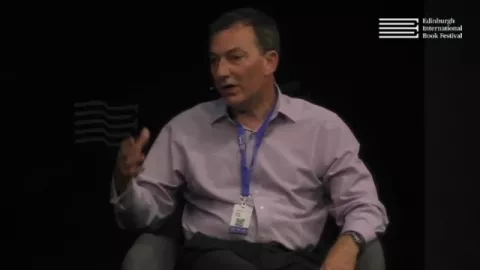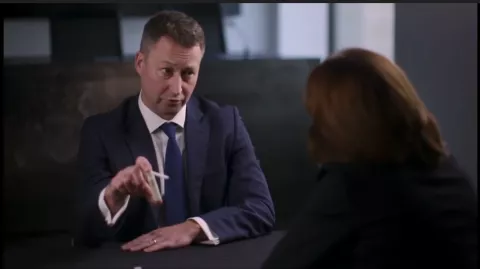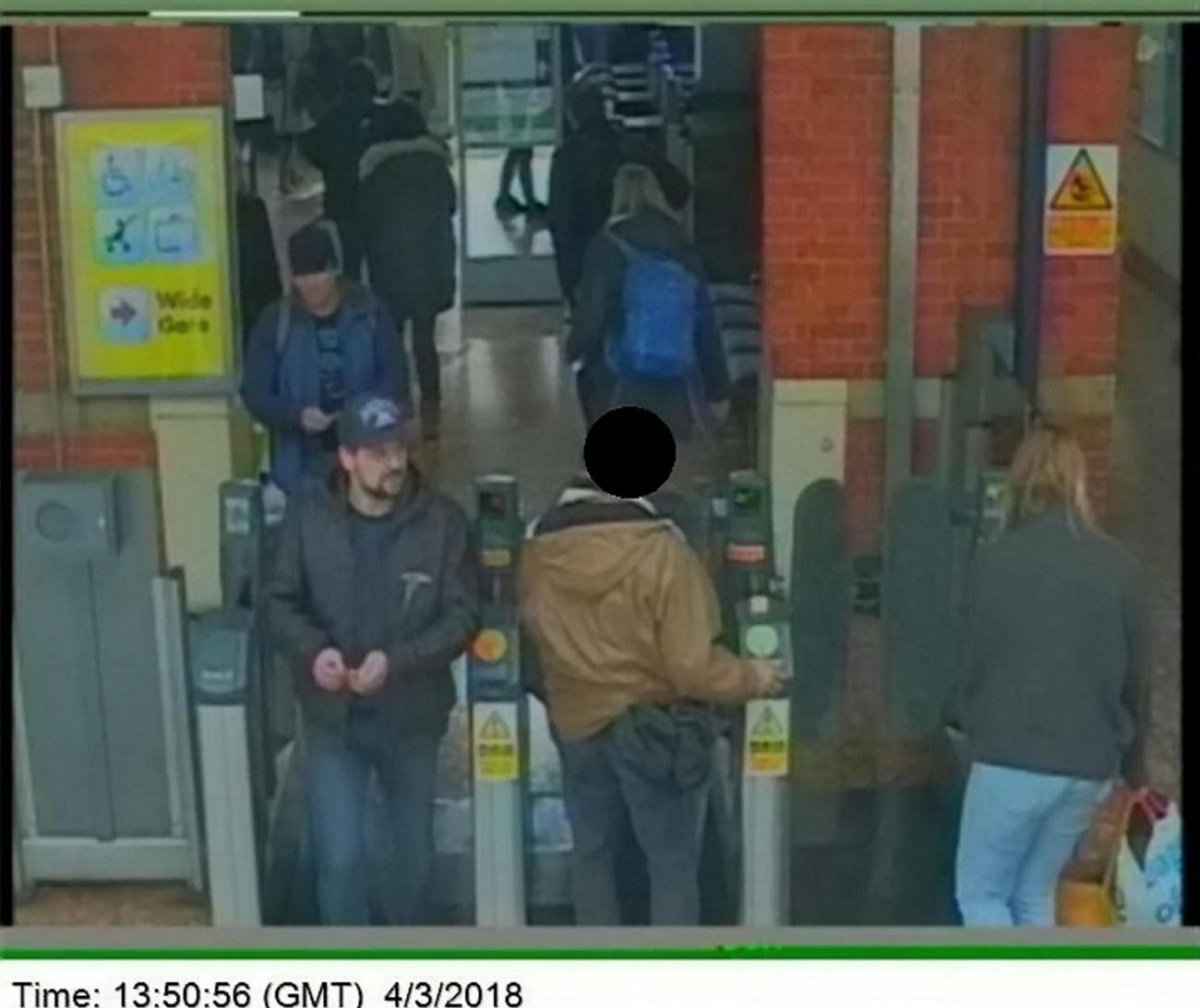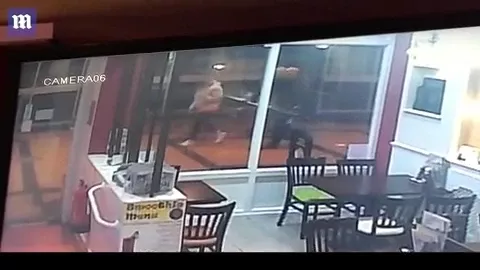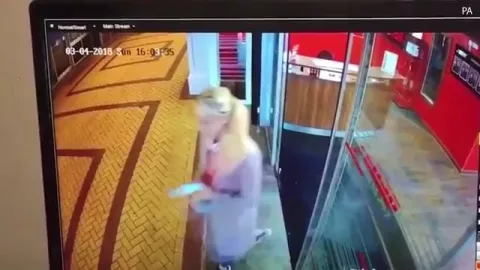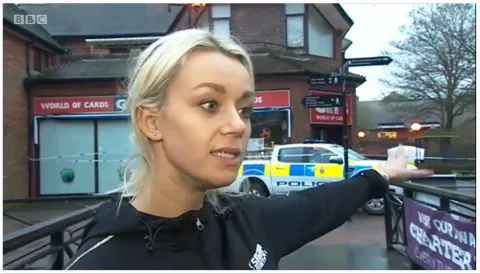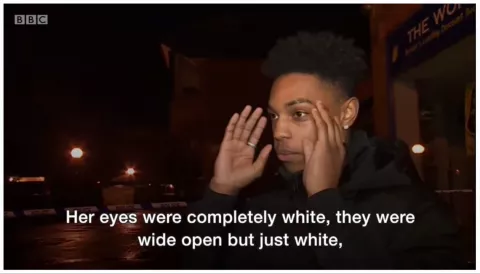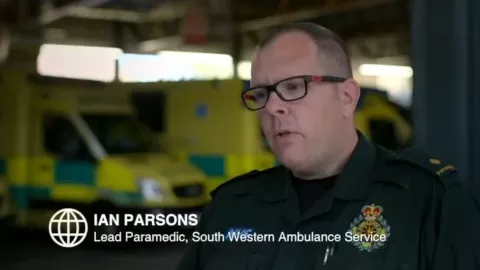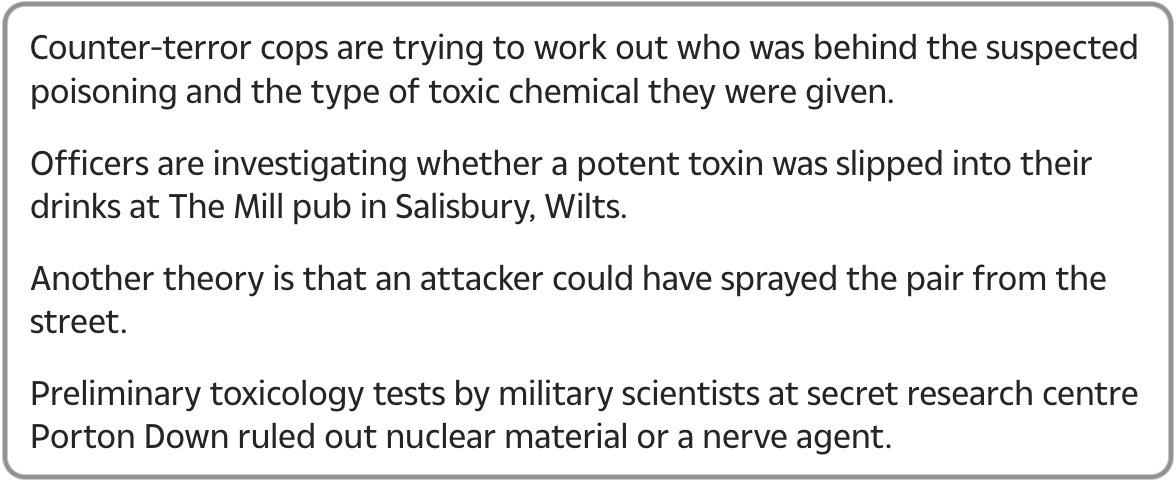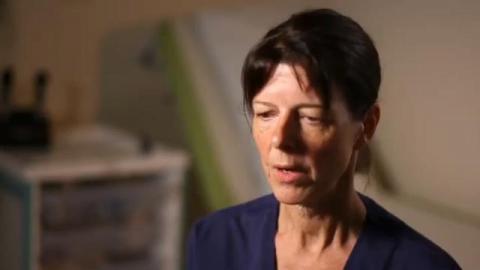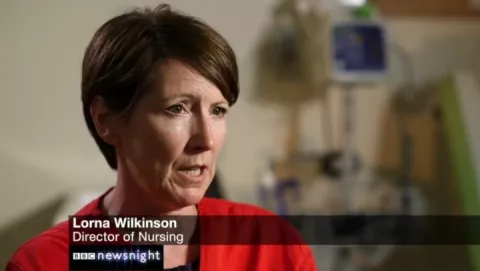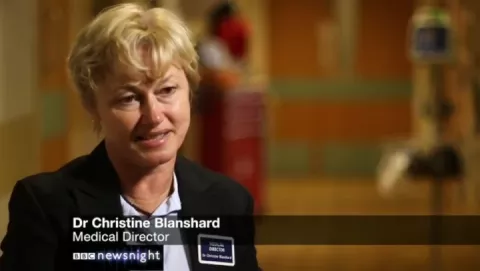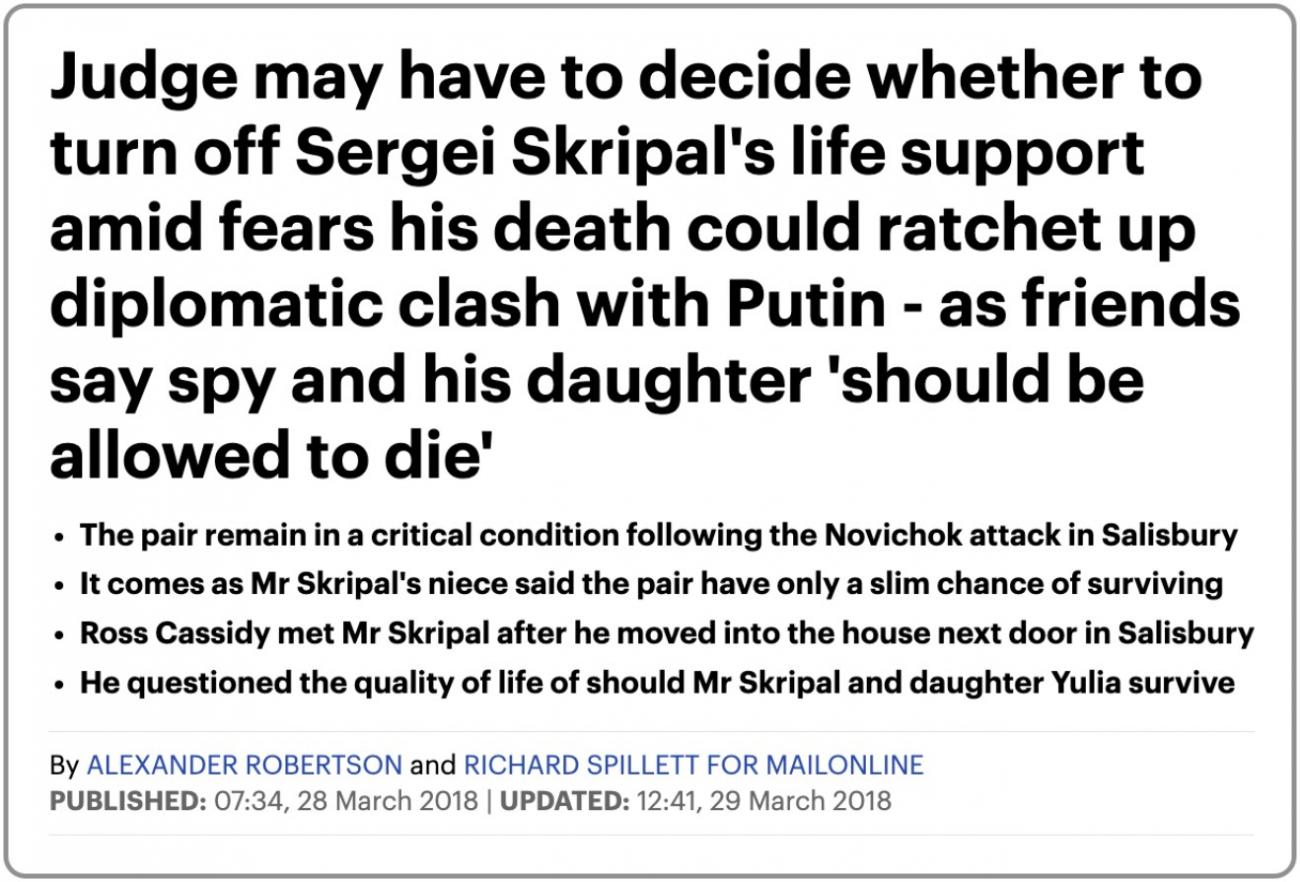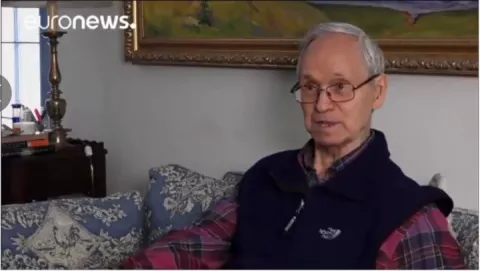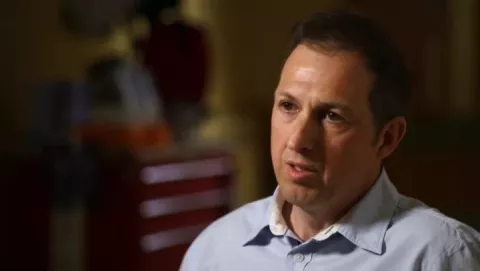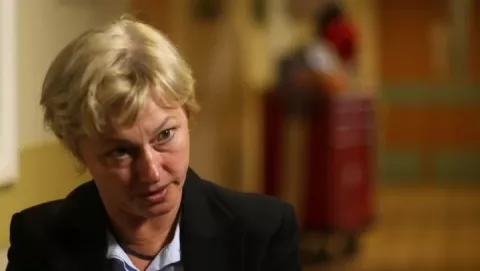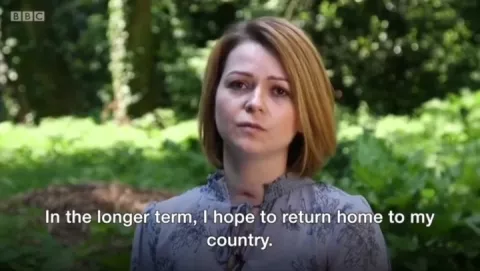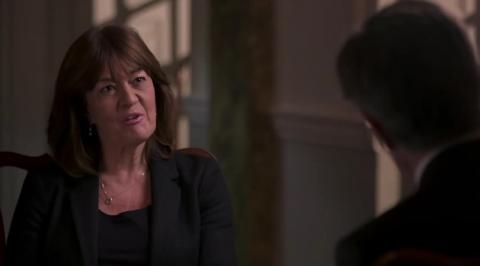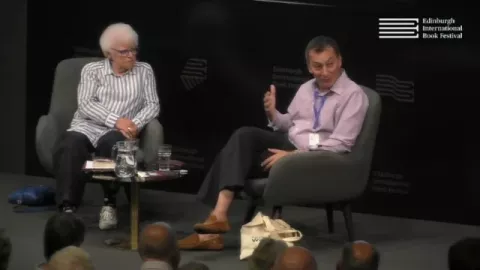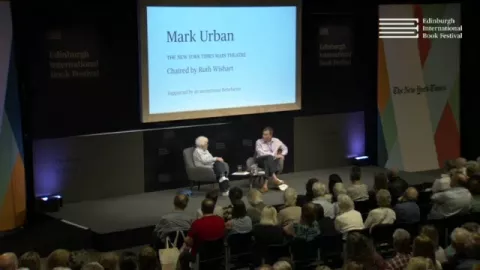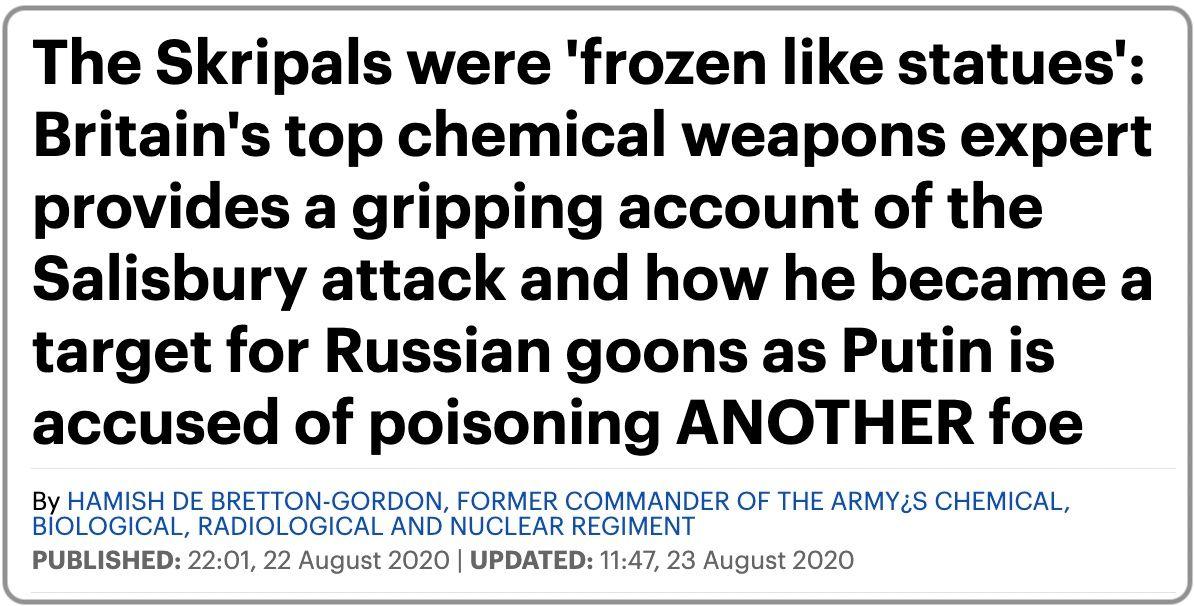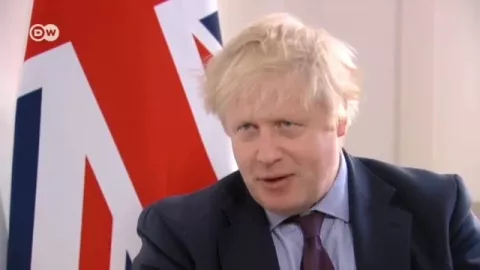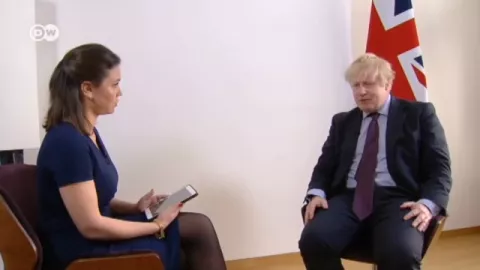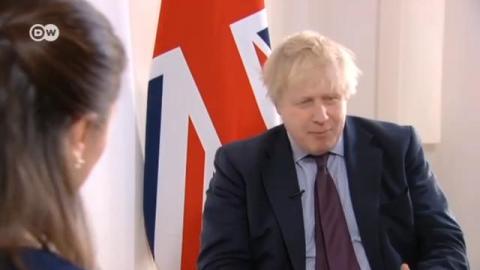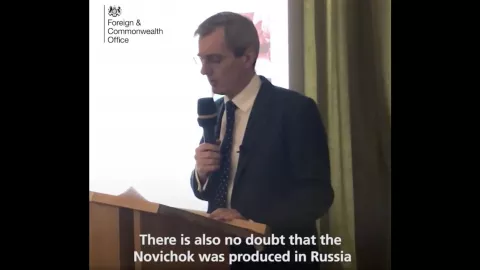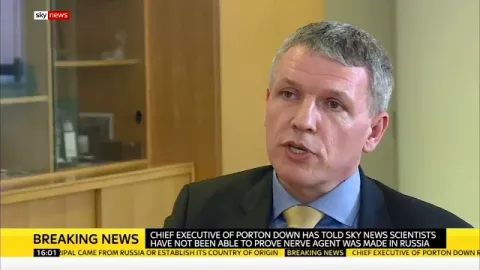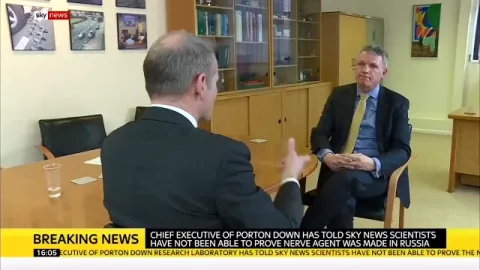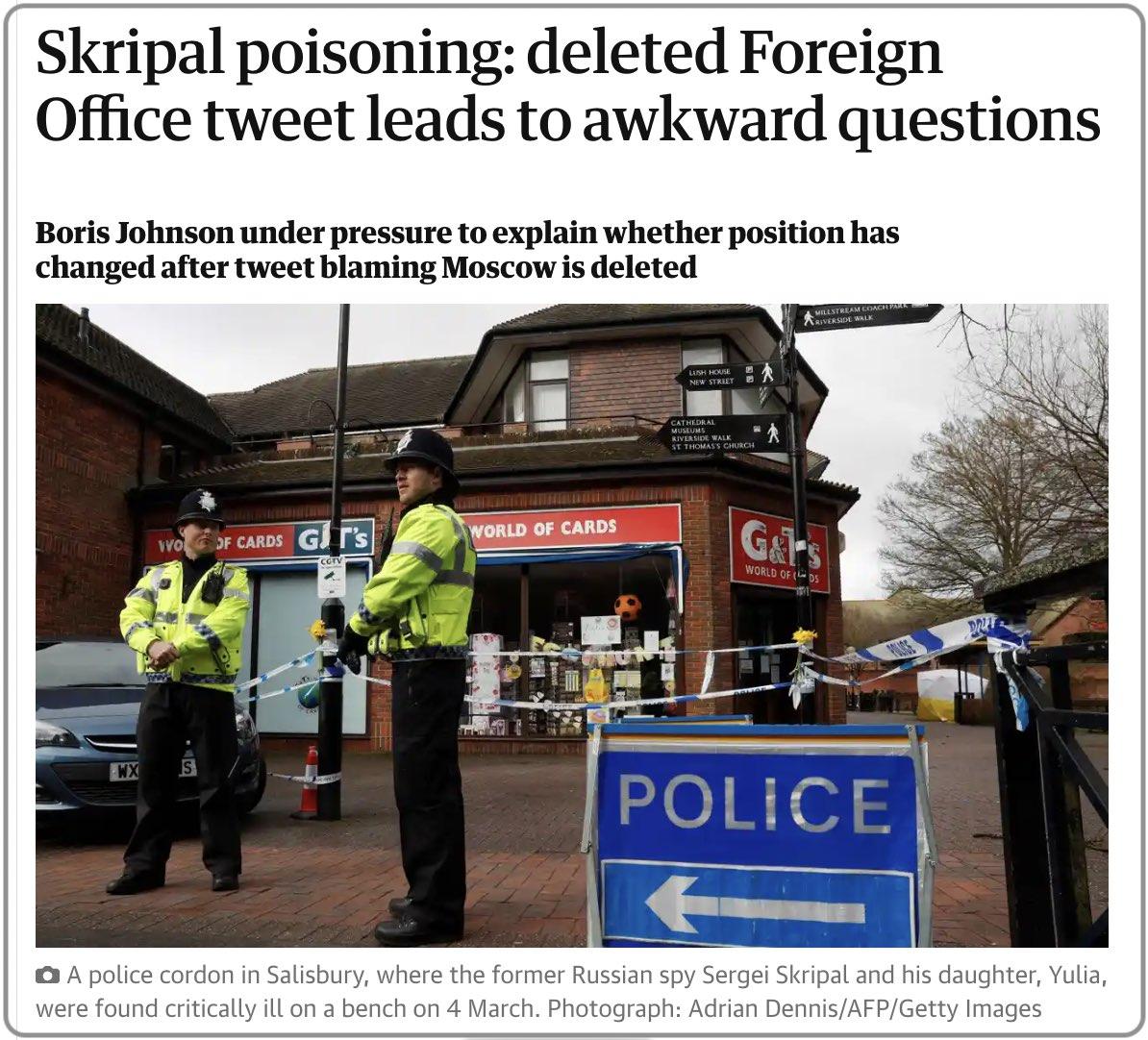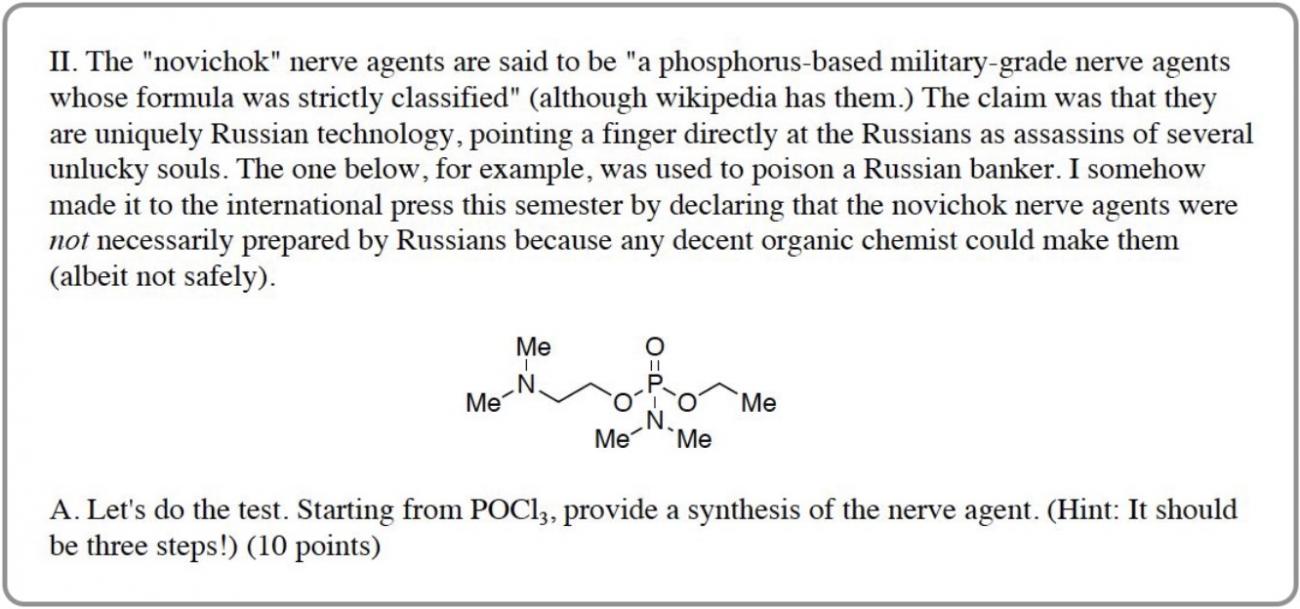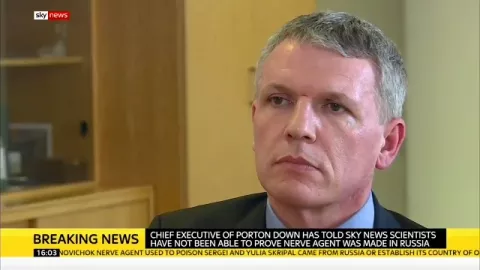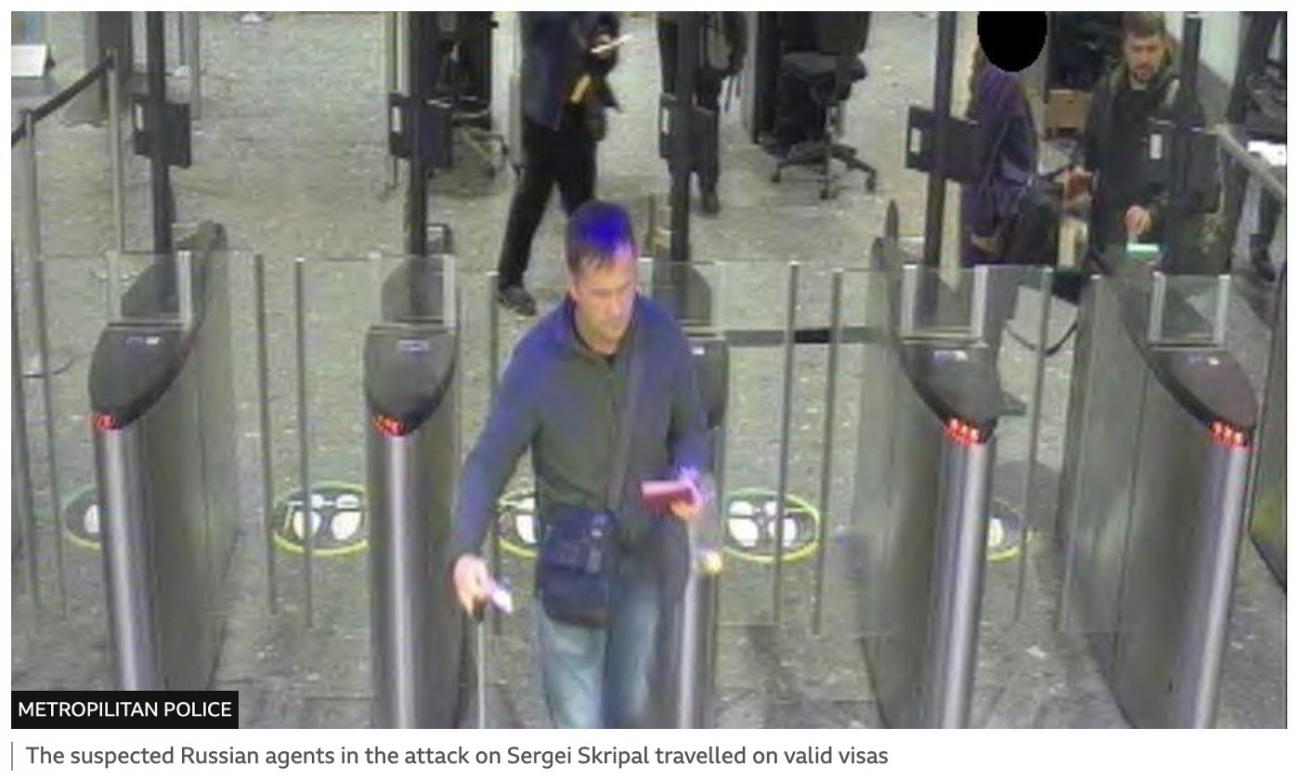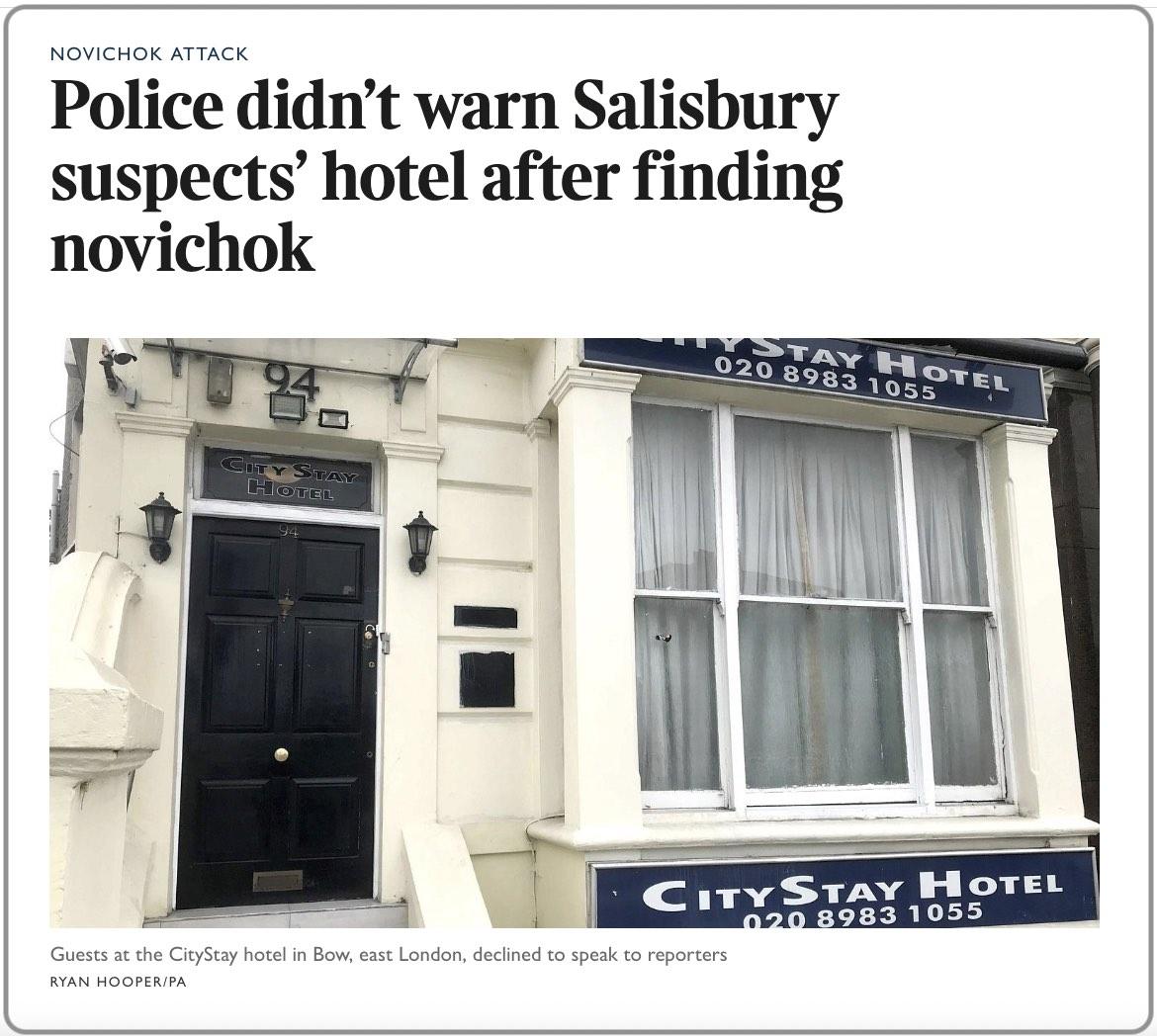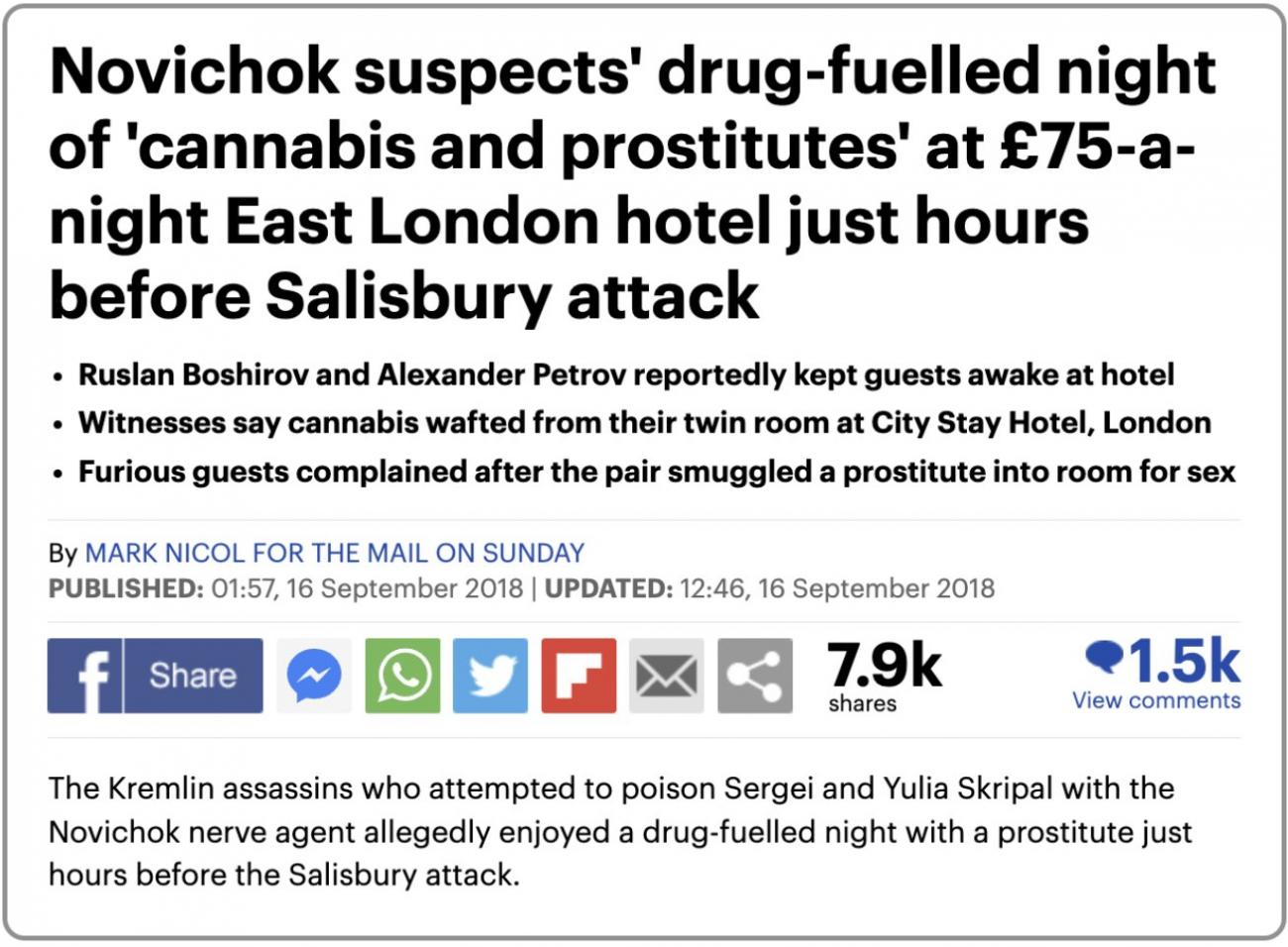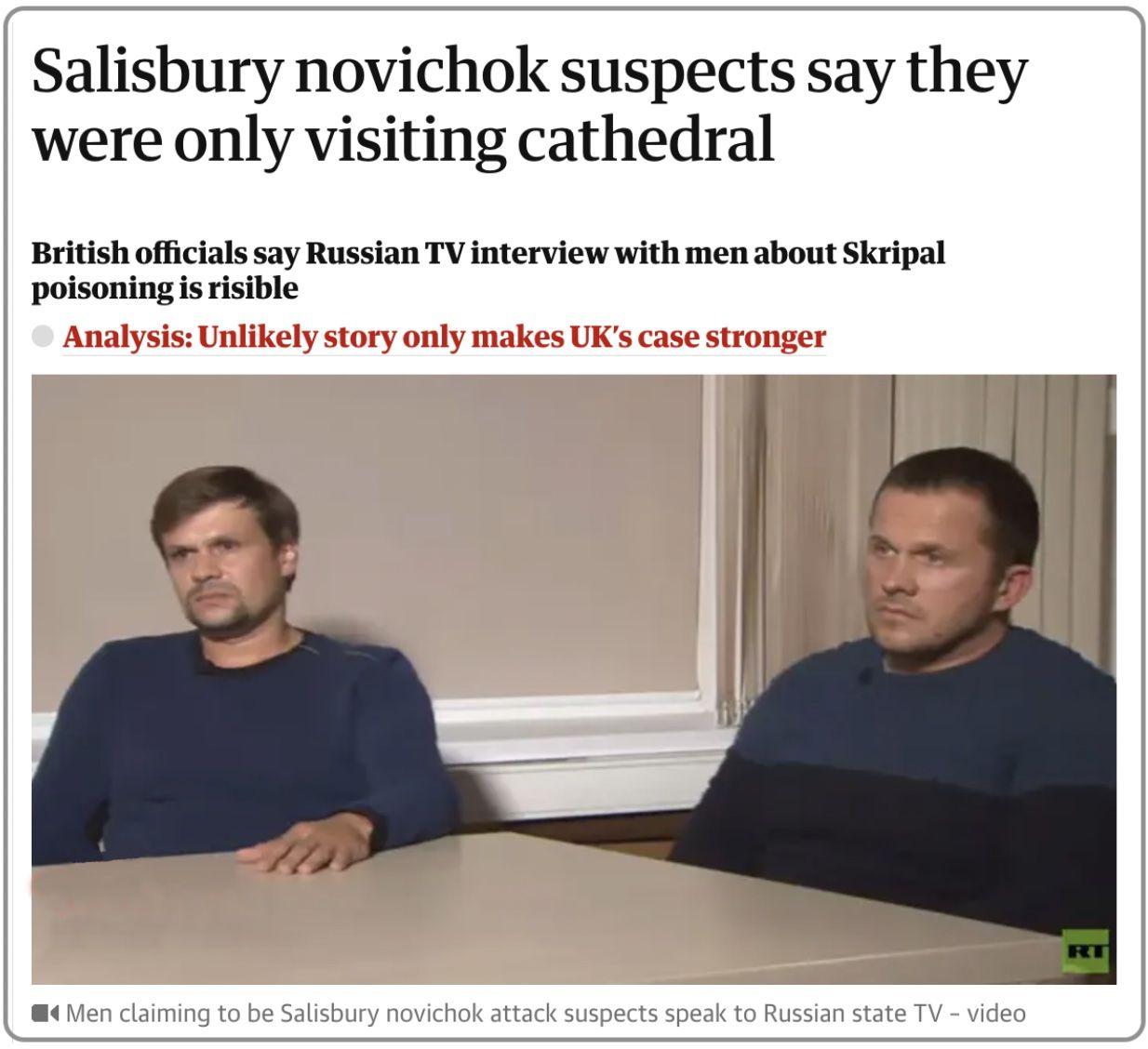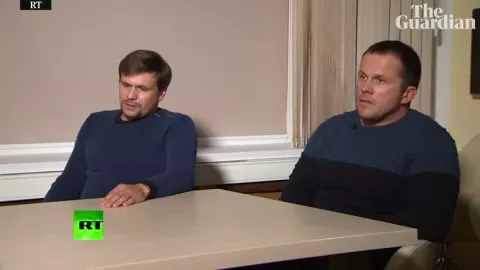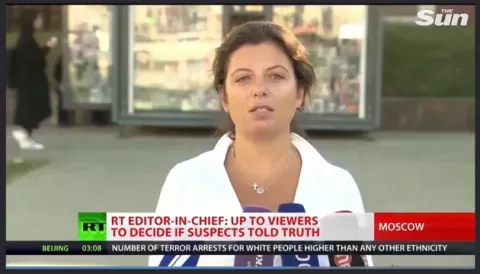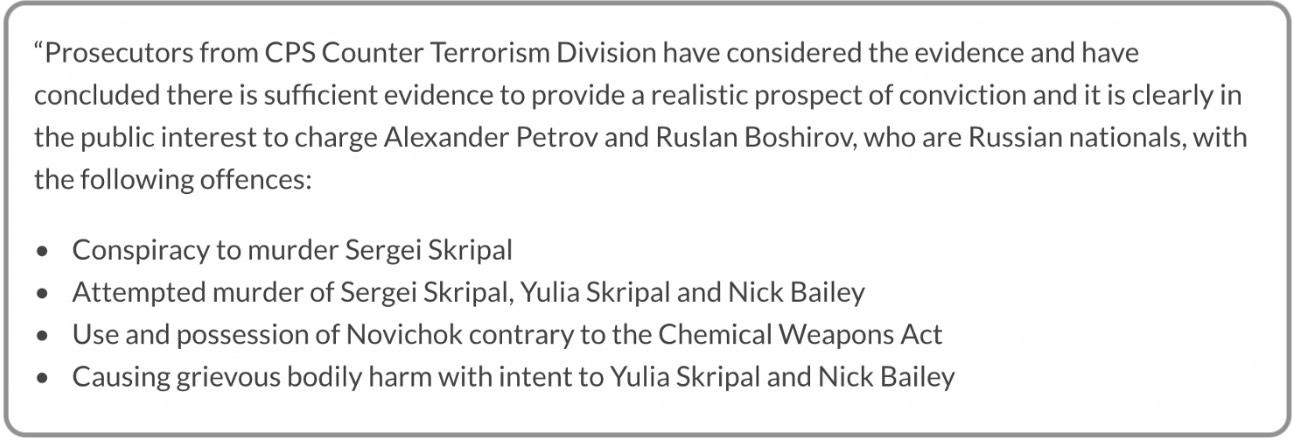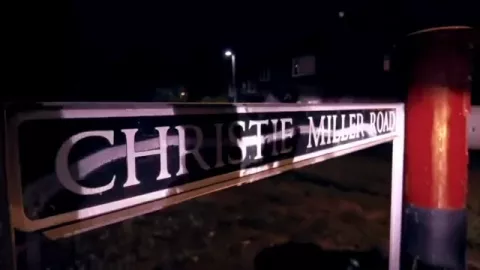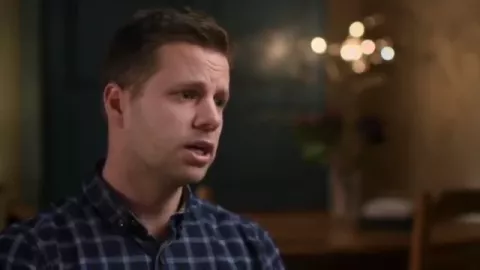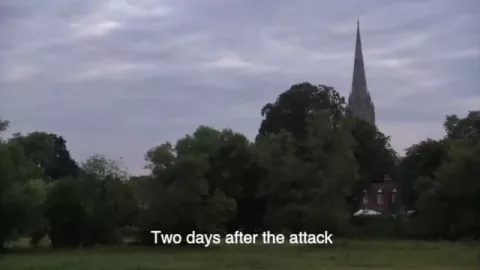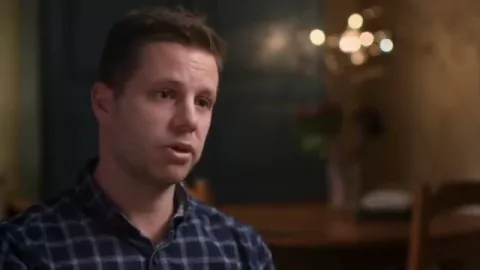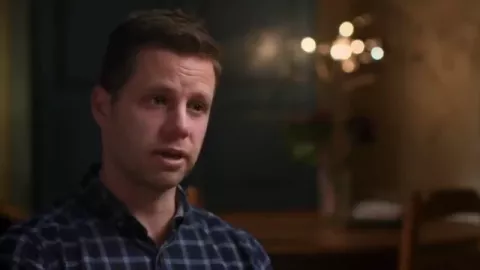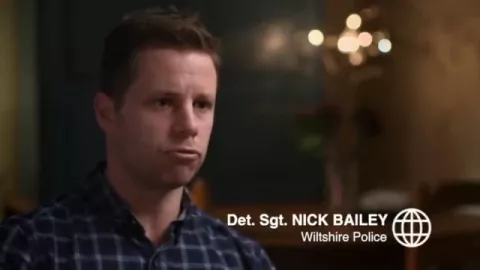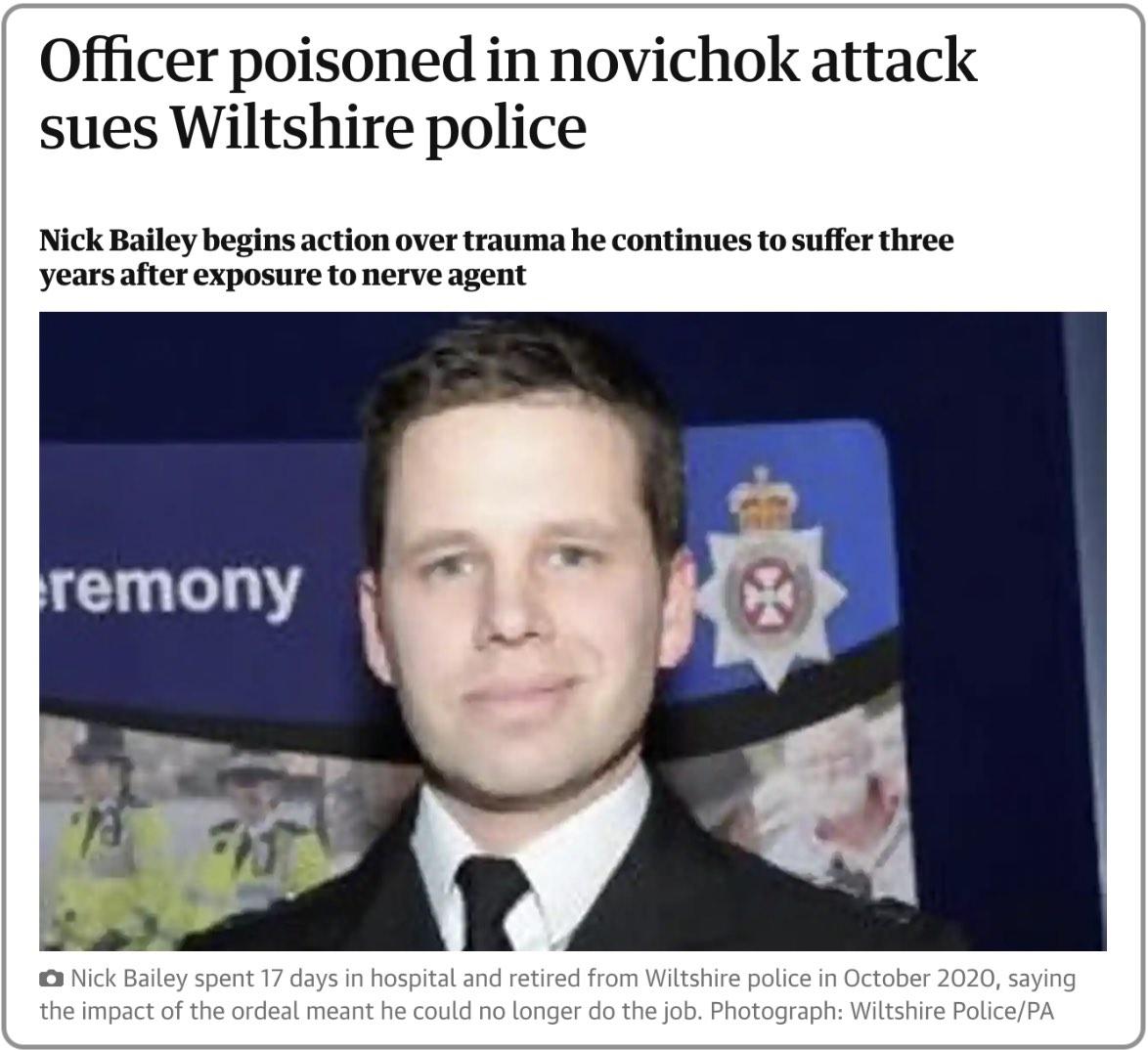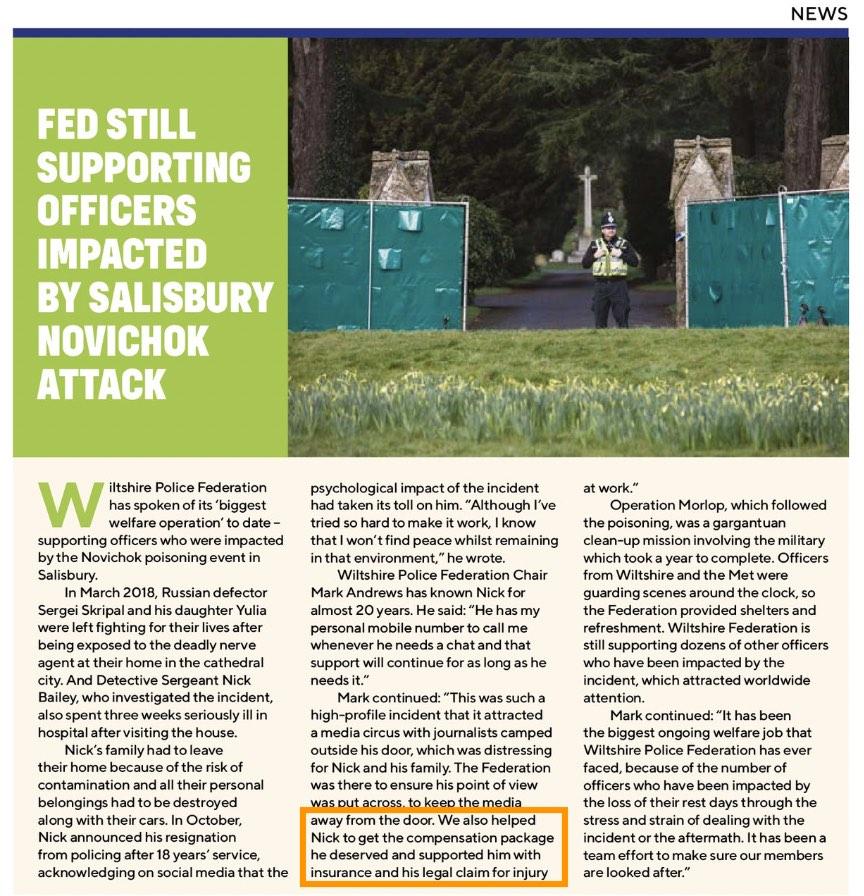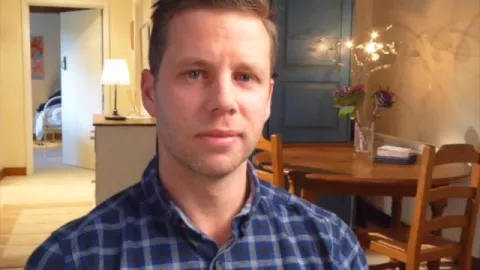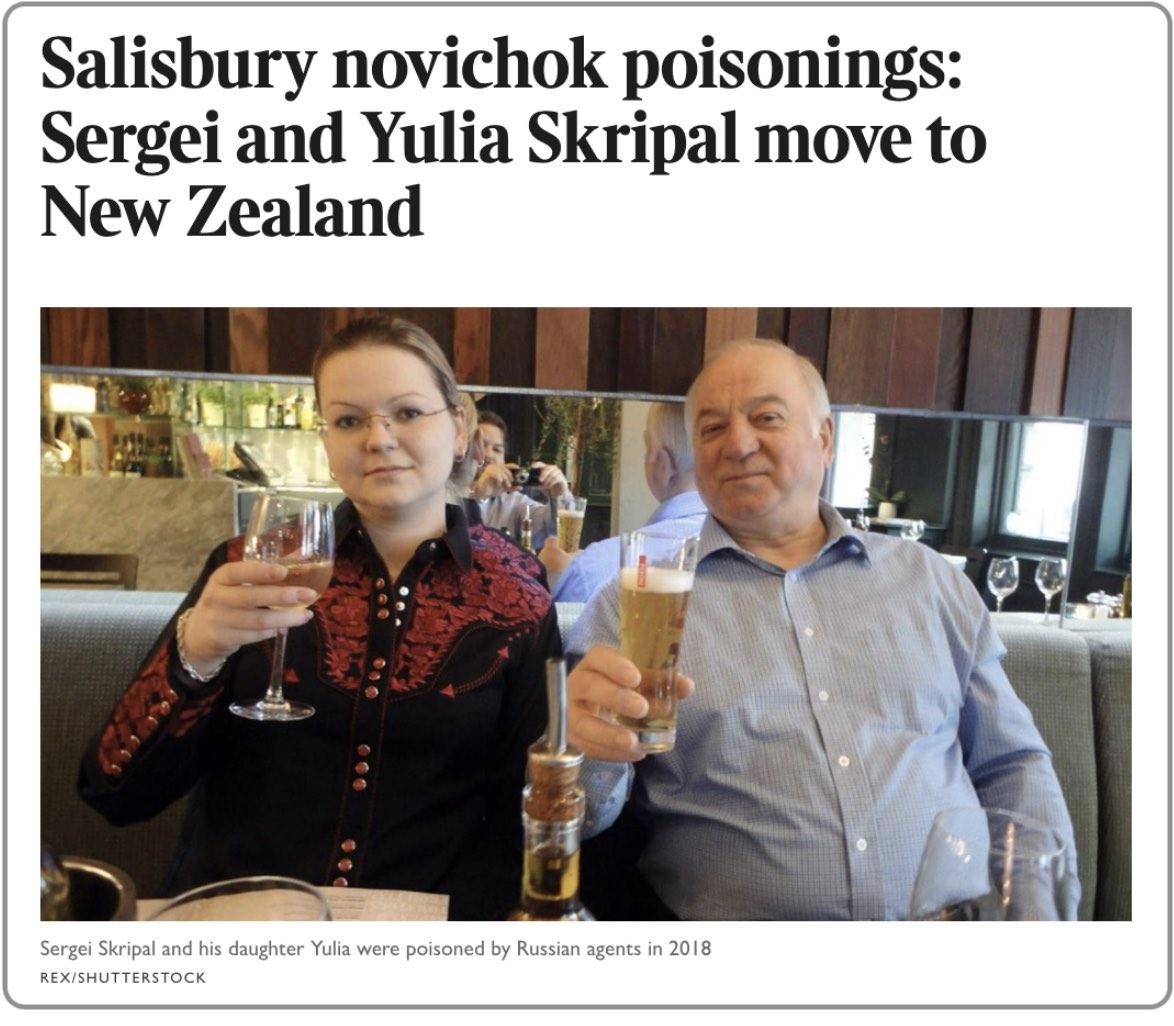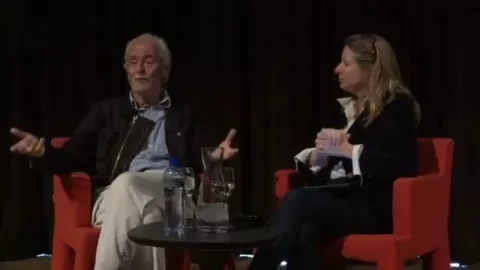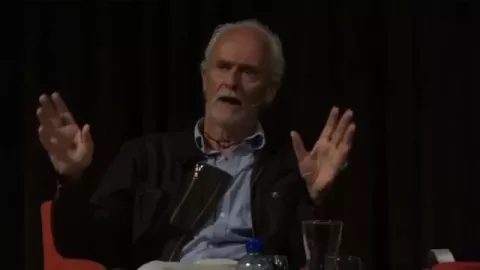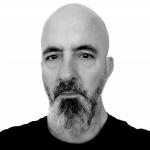
Editorial note: It should be self-evident in the below piece that neither the author, Tim Norman, nor UK Column is assessing the sources quoted as trustworthy. Adjectives in the below article such as "acclaimed" serve merely to denote the high regard in which the mainstream media and officialdom hold such sources.
This article, a summary of which is here, presents a detailed timeline that records what is reported to have happened in the English city of Salisbury on Sunday, 4 March 2018, when two Russians — Sergei and Yulia Skripal — were apparently almost killed by Novichok, a military-grade nerve agent that was developed in the USSR from the 1970s to the 1990s.
The timeline is based entirely on mainstream media reports and official sources. Where there are spaces between words in the hyperlinks, there is more than one link to mainstream or official sources to be found.
The principal sources are UK Government documents, UK Counter Terrorism Policing and the BBC. Other sources include ITV News, Reuters, Sky News, Chemistry World, The Clinical Services Journal, The Daily Mail, The Daily Telegraph, The Guardian, The Independent, The New York Times, The Mirror, The Salisbury Journal, The Sun, The Times and The Washington Post.
Although they both survived, the poisoning of Sergei and Yulia Skripal was an event with huge consequences in international relations.
British and European politicians were almost unanimous in their view that Skripal’s assassination was directed by the Kremlin.
Other incidents were subsequently linked to the attack, such as the poisoning of Alexei Navalny in August 2020 and an explosion at an arms depot in the Czech Republic in 2014 that in April 2021 Czech authorities linked to the same two Russian assassins who were ordered to kill Skripal.
The UK announced that it suspected Russia was responsible for the poisoning of Skripal and his daughter eight days after the incident.
On 12 March 2018, then-UK Prime Minister Theresa May told the House of Commons that the attack on the Skripals was “highly likely” to have been ordered by the Russian state.
“It is now clear that Mr Skripal and his daughter were poisoned with a military-grade nerve agent of a type developed by Russia,” May told MPs.
“This is part of a group of nerve agents known as Novichok,” she said. “Based on the positive identification of this chemical agent by world-leading experts at the Defence, Science and Technology Laboratory [DSTL/Dstl] at Porton Down… the government has concluded that it is highly likely that Russia was responsible for the act against Sergei and Yulia Skripal.”
UK PM Theresa May says Russia is ‘highly likely’ to have been responsible for the attack on Sergei Skripal
“There are therefore only two plausible explanations for what happened in Salisbury on the fourth of March,” May continued.
“Either this was a direct act by the Russian state against our country, or the Russian government lost control of its potentially catastrophically damaging nerve agent and allowed it to get into the hands of others.”
Theresa May tells MPs that Russia could have lost control of its chemical weapons programme
On 4 March 2022 — a few days after Russia invaded Ukraine — then-UK Prime Minister Boris Johnson used the four-year anniversary of the Skripal poisoning to repeat the accusation he made at the time as Foreign Secretary that Russian President Vladimir Putin had directed the attack.
“Our quarrel is with Putin’s Kremlin, and with his decision — and we think it overwhelmingly likely that it was his decision — to direct the use of a nerve agent on the streets of the UK, on the streets of Europe, for the first time since the Second World War,” Johnson said.
“That is why we’re at odds with Russia.”
Opposition leader Sir Keir Starmer — a former human rights lawyer who was knighted for his services to the Crown Prosecution Service of England and Wales — supported Johnson’s judgement that Putin had ordered the assassination.
An important source for this timeline is the widely acclaimed Bellingcat organisation, an independent international collective of researchers, investigators and citizen journalists that specialises in fact-checking and open-source intelligence.
The work of Bellingcat, founded by blogger Eliot Higgins in 2014, is central to what we know about the poisoning of Sergei Skripal. Bellingcat’s Christo Grozev won the European Press Prize for his work unmasking the two Russian agents who attempted to kill him.
The timeline also refers to reports by the Organisation for the Prohibition of Chemical Weapons (OPCW) and evidence given to the UK Court of Protection by the Defence Science and Technology Laboratory (DSTL) — the military facility seven miles from Salisbury known as Porton Down.
At the time of the attack on Sergei Skripal, Porton Down was in the middle of a three-week exercise called Toxic Dagger —“the UK’s biggest annual exercise to prepare troops for Chemical, Biological, Radiological and Nuclear (CBRN) operations […] involving government and industry scientists and more than 300 military personnel”.

Porton Down, the UK’s Defence Science and Technology Laboratory (DSTL) — an OPCW designated laboratory — is seven miles from Salisbury. Picture: PA Images/Alamy Stock Photo
The timeline refers to CCTV images and video footage that is in the public domain. The timestamps on these images should be read as approximate, potentially incorrect — or even false. Whatever the case may be, this evidence is presented in chronological order.
The timeline does not refer to independent bloggers or Russian outlets such as RT unless they are cited by mainstream sources.
Some inconsistencies in the detail of the timeline are noted—it is for the reader to decide how significant these inconsistencies may be.
Sergei Skripal was a colonel in the Soviet military intelligence agency known as the GRU. He was recruited by MI6 and sold secrets to the UK in the 1990s.
Skripal was arrested for this in 2004, and in 2006 Russian courts sentenced him to 13 years in prison. But in 2010 he was released to the UK in a large spy swap between Russia and the West that included Anna Chapman, “Russia’s most glamorous spy”, after a Russian spy network in the US that the United States Department of Justice called the Illegals Program was exposed.
In 2011 Skripal bought a house in Christie Miller Road, Salisbury and settled into life in the Wiltshire cathedral city under his own name, with no obvious effort made by UK secret services to conceal his identity or protect him from potential reprisal attacks, despite information that the GRU was watching him.
According to the BBC, Skripal “kept the company of British intelligence agents” in Salisbury, and his family said he was always very vigilant because he believed the Russian special services could come after him at any time.
It appears he was right to be concerned. Seven years after settling in Salisbury, Skripal was apparently attacked at his home by two GRU assassins who flew to London Gatwick from Moscow on Aeroflot flight SU2588 in order to kill him with Novichok, a nerve agent so lethal it was described at the UN as a weapon of mass destruction—like the UK-developed nerve agent VX, but even more deadly.
The New York Times reported that Novichok was a nerve agent which Western intelligence had been aware of “for decades” as a Soviet chemical weapons programme. However, there was no evidence that it had been used to target people outside of the former USSR before the Salisbury incident.

What Is Novichok, the Russian Nerve Agent Tied to Navalny Poisoning? (Published 2020 - https://www.nytimes.com/2020/09/02/world/europe/novichok-skripal.html)
In the documentary film Navalny (2022) Bellingcat’s Christo Grozev—who unmasked the assassins sent to kill Skripal—describes the “insidiousness” of Novichok.
“Within hours, any trace of it will disappear,” Grozev says. “So it will always forever look like it was a natural death.”
Christo Grozev says Novichok is ‘insidious’ because all traces of it quickly disappear so that victims appear to have died a ‘natural death’
Despite Grozev’s assertion, Porton Down was able to identify the nerve agent in blood samples taken from the Skripals hours after they were poisoned, and the OPCW was able to confirm Porton Down’s analysis using a second set of blood samples taken from the Skripals two weeks later.
Three days after the attack—five days before Theresa May told MPs that UK military scientists had identified Novichok—The Daily Mail speculated that VX was used in Salisbury because this British chemical weapon had been used in Malaysia to kill Kim Jong-nam, the half-brother of North Korean leader Kim Jong-un, the year before.
Jong-nam died within 20 minutes after VX was smeared on his face by two women who believed they were “playing a prank for a reality TV show”.
“One of the world’s deadliest poisons has emerged from the shadows after the audacious attempt earlier this month to murder a former Russian spy on U.K. soil”, Science magazine wrote two weeks after the Novichok attack, on 19 March 2018. “Scientists are racing to unravel why the mysterious nerve agent, concocted by Soviet chemists in the 1970s, is so potent.”
Like sarin, soman and VX, Novichok is an organophosphate nerve agent. These incredibly toxic substances are “similar to pesticides (insect killers) […] in terms of […] the kinds of harmful effects they cause”, the US Centers for Disease Control and Prevention (CDC) says. “However, nerve agents are much more potent than organophosphate pesticides.”
The BBC reported that “some variants” of the Soviet chemical weapon “are thought to be five to eight more times more toxic than the VX nerve agent”—which is itself 100 times more potent than sarin.
Skripal was 66 years old when he was attacked. His 33-year-old daughter Yulia had come to visit him from her home in Moscow the day before. They both came into contact with Novichok after the GRU assassins smeared the front door handle of Skripal’s house with poison gel.

Police Community Support Officers outside Skripal’s house two days after the attack, 6 March 2018. Steam from the chimney suggests the heating is on. Poisoned door handle circled. Picture: Simon Ward/Shutterstock
It was more than three weeks before the front door of Skripal’s house was reported to have been the source of the nerve agent that contaminated Salisbury.
“It is clear that Sergei Skripal’s house was not regarded as crucial to the investigation, or a potential health risk, until several days after the incident,” the BBC reported on 29 March.
The GRU assassins allegedly used a fake perfume bottle to poison the door after 12.00 noon on 4 March 2018. It seems they then discarded the bottle. It was undiscovered for four months until it appeared at a flat eight miles away from Salisbury after a woman was apparently poisoned by its contents.
“During the 2000s, Russia commenced a programme to test means of delivering chemical warfare agents and to train personnel from special units in the use of these weapons,” UK National Security Advisor Mark Sedwill wrote to NATO in a letter on 13 April 2018.
“This programme subsequently included investigation of ways of delivering nerve agents, including by application to door handles,” Sedwill—Theresa May’s top civil servant—told NATO Secretary General Jens Stoltenberg.
“We therefore continue to judge […] it is highly likely that the Russian state was responsible [for the attack on the Skripals]. There is no plausible alternative explanation.”

UK National Security Advisor Mark Sedwill accused Russia of the Skripal attack in a letter to NATO
After Sergei and Yulia were exposed to Novichok by touching the front door handle of Christie Miller Road, it took a few hours for the toxin to have a significant effect on either of them.
But eventually—at around 16.15 that afternoon—they were both overcome by the poison, and were found together “in an extremely serious condition” on a bench in Salisbury city centre.
Working with Hamish de Bretton-Gordon, a chemical weapons expert who was a colonel in the British Army and Commander of NATO’s Rapid Reaction CBRN Battalion, the BBC recreated the moment the Skripals were overcome by Novichok in The Salisbury Poisonings (2020), a docudrama about the event and its aftermath.
The BBC docudrama ‘The Salisbury Poisonings’ recreated the moment the Skripals began to experience symptoms of Novichok poisoning
But how did Sergei and his daughter end up in such a terrible state—and what happened to them after they were found?
The Day of the Skripal starts at 09.15 on 4 March 2018.

The area around the memorial stone for Sergei’s son Alexander ‘Sasha’ Skripal in Salisbury’s London Road Cemetery was sealed off four days after the poisoning. Picture: 1000 Words/Shutterstock







In his book ‘The Skripal Files’, Mark Urban says the Skripals went to the cemetery and then returned home

Screengrab from BBC TV docudrama ‘The Salisbury Poisonings’ showing Novichok contamination in the house
:
[The day after the poisoning,] one of my [BBC] editors came up [to me] and said […] ‘What do you think about this Skripal guy?’ [...] And I said, ‘Well, he was swapped [in a deal between Russia and Britain] in 2010, and he started working for MI6 in 1996…’.
And the [BBC editor] said, ‘How do you know all this?’
[S]o […] I told him that I’d been seeing [Skripal] and that there had been a book project in mind.
Mark Urban explains that Skripal was just one of several people he originally planned to interview for his book
On 6 March Urban appeared on the BBC Newsnight programme to talk about Skripal and his background

The poisoning of Sergei Skripal was The Guardian’s front page story on 6 March 2018. Neighbour James Puttock said police had been at Christie Miller Road ‘since Sunday afternoon’



The most direct route to Skripal’s house from the Shell garage is a pathway leading into Montgomery Gardens

The approach the two assassins made to the front door of Skripal’s house around 12.00 on Sunday, March 4 2018

Jukes tells Urban the Skripals needed ‘some form of advocate’ because they were under heavy sedation

After carrying out their orders, the two GRU agents went into Salisbury city centre and were seen on CCTV camera several times in the Fisherton Street shopping area, about 30 minutes’ walk from Skripal’s house.

The two assassins were captured by CCTV on Fisherton Street at 13.05 (top) and three minutes later at 13.08
As well as being captured by CCTV cameras on Fisherton Street, the two assassins were seen in CCTV footage recorded by the antique numismatist and philatelist shop Dauwalders, also on Fisherton Street.
The Dauwalders footage is timestamped 13.49, suggesting that the GRU agents had found enough of interest on Fisherton Street to keep them browsing there for 40 minutes, even though they were only six minutes’ walk from the famed Salisbury Cathedral.
In the CCTV video from Dauwalders, the assassins are seen “calmly” walking past the shop’s window display. They notice something of interest and pause to look at it more closely. “Petrov” gestures and speaks to “Boshirov” and approaches the door, but he sees the shop is closed.
As noted, after the Skripals’ missing four hours, Sergei’s car was seen on CCTV driving towards Salisbury at 13.30.
Video of Skripal’s car passing a CCTV camera at the Devizes Inn pub, Salisbury was recorded at 13.30
Sergei and Yulia have now both been exposed to Novichok, but neither of them will begin to experience significant symptoms for at least two hours.
On 12 March 2018, Prime Minister Theresa May told the House of Commons that during their visit to Salisbury city centre on afternoon of 4 March, the Skripals had gone to a restaurant and a pub, contaminating both locations with Novichok, before they were eventually overcome by the effects of the poison.
They were found incapacitated together on a bench at The Maltings—Salisbury’s central shopping area—about three hours after their exposure at Christie Miller Road.
A Bellingcat investigation published in October 2020 reported that a Moscow-based research laboratory connected to the GRU had developed a technique called “nano-encapsulation”, which had been “successfully applied in the application of organophosphate nerve agents such as the Novichoks”.
“[N]ano-encapsulation could delay the onset of the poison by several hours, which may be desirable in clandestine operations,” Bellingcat said.
It seems that the Novichok the GRU assassins had smeared on Skripal’s door could have been formulated in such a way as to give them time to escape before their target began to feel its effects.
However, in his talk on The Skripal Files at the 2019 Edinburgh International Book Festival, Mark Urban suggests the delay in onset of effects was simply due to the fact that nerve agents take time to penetrate the skin.
“The way the agent was packaged up—it was a liquid, almost treacly liquid in this fake perfume bottle,” Urban says. “A little squeeze onto the door handle. A lot of it apparently dripped off the door handle. You touch—it went through skin absorption, which is why it took […] a few hours to have an effect.”
Urban says the delay in the onset of effects of Novichok was due to slow absorption rates through the skin
In his book Toxic, Dan Kaszeta says there is known to be “a wide variance in rate of onset of signs and symptoms” when a nerve agent is applied to the skin. “This is largely due to the fact that skin thicknesses vary,” Kaszeta writes. “Also, different parts of the body have greater or lesser thicknesses of subcutaneous fat, which might slow absorption of poisons.”

“A wide variance in rate of onset of signs and symptoms” is a property that bears repeating here, because there was apparently little variance in the onset of signs and symptoms between Sergei and Yulia.
The Skripals began to experience serious effects at almost the same time, with neither able to call out to passers-by or otherwise raise the alarm as they rapidly succumbed to the poison together in a public area.
This near-simultaneous onset of effects in two physically very different people, one twice the age and body mass of the other—hours after exposure—appears to be another unusual property of Novichok.
However, in The Skripal Files, Urban suggests that Sergei began to experience effects as much as 20 minutes before Yulia, who later “keeled over”.
Sergei and Yulia never returned to the house on Christie Miller Road. It was sealed off four days later.
Inside the house, Sergei’s pet guinea pigs died of thirst and his cat became so malnourished that it had to be put down, The Guardian reported on 6 April. The bodies of the animals were incinerated at Porton Down.
The roof of the property was replaced in January 2019, and in June 2022 Wiltshire Council said it was going to be put up for sale.

Skripal’s house photographed nine months after he was poisoned, as authorities prepare to remove and replace the roof of the building as ‘a precautionary measure’. “File:House in Salisbury previously occupied by Sergei Skripal.jpg” by Richard Avery is licensed under CC BY-SA 4.0.
At 13.40, Skripal’s car was parked on the upper level of the Sainsbury’s supermarket car park in The Maltings shopping area. Police sealed off areas of the car park on 12 March, eight days after the incident.

A pay and display parking machine on the upper level of Sainsbury’s car park sealed off by police, photographed 13 March. Picture: PA Images/Alamy Stock Photo
The tow truck that was later used to remove Skripal’s BMW from Sainsbury’s car park “was itself taken away by the Army to be tested, decontaminated and potentially destroyed”, The Daily Mail reported on 14 March.

After parking at Sainsbury’s, the Skripals were only two minutes’ walk from Fisherton Street where the assassins who had poisoned them, about an hour and a half earlier, were window-shopping at almost exactly the same time.

The Skripals walked in the opposite direction from Fisherton Street, towards the River Avon, and went to the Avon Playground to feed ducks.

CCTV video exists of the Skripals feeding ducks at Avon Playground, but it has not been released to the public. We know this video exists because three boys joined the Skripals while they were feeding the ducks, and their parents were later contacted by police who had used CCTV video to identify them.
The possibility that children could have been exposed to Novichok was sensationally reported by The Sun newspaper, which two weeks after the attack sent a journalist to interview one of the boys and his parents.

The Sun reported that Aiden Cooper was exposed to Novichok, but tests later showed he was unharmed
Aiden Cooper’s father said he was shown CCTV of the duck feed by police. His mother said medical tests showed Aiden had not been injured after his potential exposure to Novichok through contact with the Skripals.

The Salisbury Poisonings presents a dramatised sequence of police reviewing CCTV footage of the duck feed—which is timestamped 13.38—and dwells on the police realising the danger of contamination to the boys, the wildlife on the River Avon and the wider environment.
“They could already be contaminated at this point,” says Tracy Daszkiewicz, portrayed by Anne-Marie Duff. “This goes straight into the water, too.”
‘The Salisbury Poisonings’ docudrama showed police reviewing CCTV of Skripal feeding ducks with local boys
The Mirror reported that one of the boys was believed to have eaten some of the bread, as did The Sun.
According to The New York Times, shortly after the Skripal attack, British intelligence informed US counterparts that Novichok had killed ducks and injured children at Salisbury, and provided then-Deputy Director (later Director) of the CIA Gina Haspel photographic evidence of this collateral damage caused by the assassination attempt.

These photographs were used by Haspel to persuade then-President Trump to expel 60 Russian diplomats from the USA as part of a co-ordinated international response to the attack. “Mr. Trump fixated on the pictures of the sickened children and the dead ducks,” The Independent also reported.
Trump approved the expulsions, which included closing down the Russian Consulate in Seattle. However, The Washington Post reported that he regretted this decision when he realised he had committed the USA to expelling many more Russian diplomats than any other nation.
It emerged that the photographs the British government had supplied to the CIA were not real. No children were injured and no ducks were killed by the Novichok that the assassins had used in their attempt to murder Skripal.

Three days after The New York Times story appeared, Tracy Daszkiewicz, then Director of Public Health at Wiltshire Council, responded in The Guardian with a statement that “no wildlife were impacted by the incident and no children were exposed or became ill”.
More than two weeks later, on 5 June 2019, The New York Times issued a correction to its story, confirming that the photographs Haspel had shown to Trump were not from the Salisbury incident.
“Ms. Haspel displayed pictures illustrating the consequences of nerve agent attacks, not images specific to the chemical attack in Britain,” The New York Times correction stated.
Julian Barnes, who wrote the story, also issued a correction on Twitter.

Photographs of a fake perfume bottle that contained Novichok were released by police on 5 September 2018
At some point before returning to Salisbury railway station at 13.50 and catching a train back to Waterloo, the assassins apparently discarded the fake perfume bottle they had used to poison Skripal’s front door.
Exactly when and where they did this is not known, but it must have been after they used it—no earlier than 12.00—and almost certainly before they returned to the station at 13.50.
The bottle was discovered on 11 July—more than four months after the attack—at a flat in Amesbury, about eight miles away from Salisbury, after two people were taken ill there on Saturday, 30 June 2018.
“Neighbours saw police, fire engines and people in ‘green suits’ arrive at the flat at around 7pm on Saturday,” The Independent reported.
A major incident was not declared until three days later and it was fully ten days before the bottle was discovered by police at the flat.

The two victims of the poisoning at Muggleton Road, Amesbury—45-year-old Charlie Rowley and 44-year-old Dawn Sturgess—were reported on 4 July to have been exposed to Novichok after tests by DSTL Porton Down.
On 5 July the Queen Elizabeth Gardens area in Salisbury was sealed off by police after it was “confirmed as a location that Dawn Sturgess and Charlie Rowley had visited prior to collapsing”, ITV News reported. The area remained closed for almost two months.

Queen Elizabeth Gardens in Salisbury was closed for almost two months after Charlie Rowley and Dawn Sturgess were found to have been poisoned by Novichok in Amesbury. Picture: Amani A/Shutterstock
On 10 July, police stated that “a small box labelled as Nina Ricci Premier Jour was recovered from a rubbish bag in the kitchen” of the Muggleton Road flat. The following day “a small glass bottle with a modified nozzle was found on a kitchen worktop”.
How the bottle arrived in Amesbury is not clear.
In a statement released on 5 September 2018, Neil Basu, then-Head of Counter Terrorism Policing, said that the resident of the flat—45-year-old Charlie Rowley—had told police he found the bottle in a charity bin in Salisbury on Wednesday, 27 June and had apparently brought it home.
However, four days after he was released from hospital on 20 July, Rowley was interviewed by ITV News reporter Rupert Evelyn. Evelyn drove Rowley around Salisbury in an attempt to establish where Rowley found the bottle.
In Evelyn’s video report published on 26 July, Rowley makes it clear he has no idea where the bottle came from, and cannot confirm it was even in Salisbury.
“One critical piece of information that so far remains a mystery is where Charlie Rowley found the sealed box containing the chemical weapon,” Evelyn says in a voiceover. “He made it clear he could not remember.”
“It is very vague as to where I found it, as to when I found it,” Rowley says. “I believe it may have been in the Salisbury area, possibly Amesbury. I’m not sure.”
“We took Charlie to Salisbury to see if there was anything specific he recalled about finding the perfume bottle,” Evelyn says.
“I don’t have any memory of finding it at all,” Rowley says, as Evelyn drives him around the city.
Evelyn brings Rowley to some bins behind a pub on Catherine Street called The Cloisters, now renamed the Bell & Crown, about three minutes from Salisbury Cathedral. The Bell & Crown is next to a Cancer Research charity shop, since closed.
“It’s possible that it may have been somewhere like here,” Evelyn says.
“It’s a possibility that I may have found it here, because on occasions I’ve found many things and taken it home,” Rowley replies.
“Items of value, of interest?,” Evelyn asks.
“Of interest, of value, yes,” Rowley replies.
Rowley’s account “has to be treated with caution”, The Guardian wrote on 6 September. “He did not initially tell police about the bin. It was only after he spoke to ITV News about the bin that police sealed the area off.”
The Guardian reported that the bins were taken away for analysis on Thursday, 2 August—a week after ITV News broadcast Rowley’s interview.
“The bins were removed on Thursday from behind the Cloisters pub and taken to a government laboratory at Porton Down to be analysed,” The Guardian said. The area had been cordoned off, the article reported.
A year after Rowley was poisoned, in June 2019, The Guardian reported that he did not believe the bottle found by police at his flat had been used in the Skripal attack and did not believe it could have remained in a charity shop bin for almost four months.

“Where did the bottle come from?” Rowley asks. “Was it the Russians or wasn’t it? How did it get on the streets? It’s still a blank. It can’t possibly be the same bottle that was used on the Skripals. They empty the bins regularly.”
Although he was unclear about where the bottle came from, Rowley was clear about its condition. He said it was boxed and sealed, and inside the box he found the pump applicator separate from the bottle.
Rowley said he needed to use a kitchen knife to cut the “thick plastic” and open the box. He then attached the applicator. In the first part of his interview with Evelyn, Rowley says he spilled a significant amount of the deadly liquid on his hands as he did so, but washed it off.
Evelyn says in a voiceover:
[The] chemical weapon [was] stored in an unopened and unused bottle, which [Rowley] found and unwittingly contaminated himself with.
Rowley recalls in the voiceover:
You had to remove the bottle from the cellophane wrapper, put the pump dispenser on the bottle, and it poured […] I ended up tipping some on my hands. But I washed it off under the tap.
My hands were covered with the stuff. Hence, I can tell you it was an oily substance with very little odour. You run tests on it, and I was in complete shock when they told me it was Novichok.
Despite the lack of odour to the liquid, Rowley gave the bottle to his partner, Dawn Sturgess, believing it contained perfume and was genuine because it “looked like it hadn’t been used”. This “made me think it was quite safe”, he told ITV News.
“Scientists hope there will be enough Novichok left in the bottle for them to determine whether it came from the same batch used in the Skripal attack,” The Guardian reported on 13 July. This will be “a finding that carries huge diplomatic implications”.
“They will compare whatever is left in the bottle with a small sample recovered from the door of the Skripal’s home,” The Guardian said.
“Experts are trying to determine whether the Novichok that poisoned a couple in Wiltshire was from the same batch used in the attempted murder of Sergei Skripal and his daughter Yulia,” ITV News reported on 14 July. “[T]ests will be carried out to try to establish whether it is from the same batch that poisoned the Skripals in March.”

“A team from the Organisation for the Prohibition of Chemical Weapons (OPCW) was called in to independently identify the substance used,” the BBC reported on 18 July. “The global watchdog will […] analyse the substance before reporting back its conclusions.”
From 15 to 18 July, an OPCW team visited Wiltshire for a second time in 2018 to take samples, analysis of which “confirm[ed] the findings of the United Kingdom relating to the identity of the toxic chemical”.
The OPCW then came to the UK for a third time on 13 August 2018 to collect “a sample of the contents of a small bottle that the police seized as a suspect item from the house of Charles Rowley in Amesbury”.
“The results of the analysis of this […] sample conducted by OPCW Designated Laboratories show that the sample consists of the toxic chemical at a concentration of 97–98%,” the OPCW reported on 4 September. “The sample is therefore considered a neat agent of high purity.”
This statement echoes the OPCW’s report of 12 April that the “environmental samples” taken from the front door of Skripal’s house were of “high purity, persistent and resistant to weather conditions”.
However, it seems that the nerve agent on the door handle was degraded by the environment during the two weeks that elapsed between the assassins applying nerve agent to it and the OPCW team taking samples—and, partly because of this, it was not possible to establish whether the Novichok batch was the same in the Salisbury and Amesbury incidents.
The OPCW said in its report of 4 September:
[D]ue to the unknown storage conditions of the small bottle found in the house of Mr Rowley and the fact that the environmental samples analysed in relation to the poisoning of Sergei and Yulia Skripal […] were exposed to the environment and moisture, the impurity profiles of the samples […] do not make it possible to draw conclusions as to whether the samples are from the same synthesis batch.
Despite this inconclusive statement from the OPCW—compounded by Rowley’s questions about the bottle and the fact that he could not say where it had come from—it was widely reported, including in the House of Commons and by the police, that the bottle he opened was the “recklessly” discarded container involved in poisoning Skripal’s door.
“Our own analysis, together with yesterday’s report from the Organisation for the Prohibition of Chemical Weapons, has confirmed that the exact same chemical nerve agent was used in both cases,” Prime Minister Theresa May told MPs on 5 September.
“It stretches credulity the identification of such nerve agent twice in close proximity to be a coincidence,” Karen Pierce, then the UK’s permanent representative to the UN, told the Security Council on 6 September.
“The perfume container had been used to put the nerve agent onto Mr Skripal’s front door handle,” the BBC stated unequivocally in June 2020.
The Washington Post reported that the bottle had been used to deliver the poison in an article on 3 March 2022, saying it was found to contain “less than a tablespoon” of the liquid that Rowley had previously spilled on his hands.

“The surprise,” the Washington Post article said, “was the sheer potency of the oily fluid inside the vial. It was enough poison, the scientists calculated, to wipe out a small town: the equivalent of thousands of lethal doses”.
Synthesis
If we accept these reports from ministers, diplomats and the media, as well as the police statement that the the Salisbury and Amesbury poisonings are linked—and if we also accept Rowley’s statement that the bottle was boxed and wrapped in plastic—then it would seem that before returning to London, the GRU agents disassembled their assassination weapon, put it into a box, sealed it in plastic, and then threw it away.
The fact that the bottle had been sealed in “thick plastic” was mentioned by the barrister Michael Mansfield QC in the UK High Court two years later. “Someone had taken the trouble to seal this up very tightly,” Mansfield said.
There is no clear reason why the assassins would have taken the trouble to do this—not least because they could have been exposed to Novichok in the process—and so some media reports began to suggest that the bottle found in Amesbury might not have been the actual bottle used in the attack.
“If Rowley is correct about the perfume bottle being boxed and sealed, it may undermine the line of inquiry that the Novichok that he and Sturgess came into contact with had been discarded by the attackers of the Skripals,” The Guardian wrote on 24 July 2018. “It also opens up the possibility that there may yet be more Novichok that has not been found in Wiltshire.”
Reporting Basu’s statement on 5 September 2018 that police “don’t yet know where the suspects disposed of the Novichok they used to attack the door, where Dawn and Charlie got the bottle that poisoned them, or if it is the same bottle used in both poisonings”, The Daily Mail suggested that a second Novichok container might still be undiscovered in Salisbury.
The Sun also reported that “a second perfume bottle containing Novichok may not have been discovered”.

The Guardian made the same suggestion, while reporting that “the police […] are confident the two poisonings in March and June are linked”.
In a talk for the Edinburgh Skeptics Society that was streamed in August 2021, Bellingcat associate Dan Kaszeta also suggested that the bottle found in Amesbury might not have been the weapon used to attack Skripal.
Kaszeta hypothesised that the “perfume sprayer” had been “stashed in a dead drop somewhere as a back-up supply” in advance of the mission to kill Skripal—but that it had turned out not to be required.
“Was that perfume bottle sent into the [UK] Russian Embassy in a diplomatic pouch and some Russian spy here had to go and stick it in a dead drop there?” Kaszeta asks.
Kaszeta says the GRU is ‘a bit sloppy but also a bit thorough’ and suggests different agents ‘stashed’ the bottle
In his talk on The Skripal Files at the 2019 Edinburgh Book Festival, Mark Urban shares part of Kaszeta’s hypothesis: namely, the possibility that the bottle was brought into the UK not by the GRU agents but in a diplomatic bag “smuggled into the Russian embassy in London”.
Urban says he does not believe that the Novichok perfume bottle was brought into the UK by the two assassins in their personal baggage. He also reports “various theories” as to how it could have been undiscovered for so long.
“The weakest part of the whole British case here is around that perfume bottle,” Urban says.
“The police have absolutely no evidence about what happened to that dispenser from when they say it was used to [put Novichok] on the door handle in Christie Miller Road, through to the point that it kills Dawn Sturgess.
“I’ve heard from people investigating various theories. Some are that it lay in a bush for ages, then someone put it in a bin, then Charlie Rowley found it. Others are that he’d found it weeks before but couldn’t remember.”
“The bit I don’t get is why […]” Ruth Wishart begins to ask.
“Why they [the assassins] just got rid of it?” Urban finishes her question for her.
“Well, look—the one thing you wouldn’t want to do is travel back through an airport with it,” he says. “So you’ve got to dispose of it somehow. And indeed I believe they wouldn’t have travelled in with it.”
Mark Urban says he does not believe the assassins travelled to the UK with the fake perfume bottle on their persons
Kaszeta’s “dead drop” hypothesis was not supported by the BBC. On 15 July 2022, the BBC reported that the bottle found in Amesbury four months after the Skripal poisoning was “believed” to be the actual weapon that the assassins used to apply nerve agent to Sergei’s front door.
“[Dawn Sturgess] and her partner Charlie Rowley came into contact with Novichok through the discarded bottle, which, it is believed, was used by members of a Russian military intelligence unit in an assassination attempt against former spy Sergei Skripal,” the BBC said.
The Novichok perfume bottle came into the media spotlight for two reasons.
The most important reason is that its contents apparently killed Dawn Sturgess, who after receiving the bottle from Rowley sprayed some of the substance on her wrists on the morning of 30 June and began to experience symptoms within 15 minutes. This suggests the poison in the bottle may not have been treated using the nano-encapsulation technology that Bellingcat described.
An ambulance was called, arriving at 10.15, and Sturgess was taken to Salisbury District Hospital.
“[P]olice and paramedics attributed her symptoms to a drug overdose,” The Times reported on 5 July. “They came to the same conclusion a few hours later when her partner, Charlie Rowley, began foaming at the mouth and entered a ‘zombie-like state’.”
Sturgess died in hospital eight days later on 8 July, when the decision was taken to turn off her life support. However she never regained consciousness after passing out in the bathroom of Rowley’s flat, and it appears that she may have died in the physical sense on 30 June.
Sturgess is the only person to have been killed by the Novichok that the GRU assassins used in their attempt to murder Skripal. However, at the time of writing — October 2022, more than four-and-a-half years since her death—a coroner’s inquest to determine how she died has still not been held.
This is because the original coroner decided to limit the scope of the inquest by ruling that he “would not consider whether any Russian state agents, other than two named suspects [‘Boshirov’ and ‘Petrov’] were responsible for Ms Sturgess’s death, or issues relating to the source of the Novichok”.
This decision was successfully challenged in the High Court by Sturgess’s daughter, where judges ruled that “[t]here is […] prima facie evidence that an attempt was made on British soil by Russian agents to assassinate Mr Skripal and that it led to the death of Ms Sturgess”.

Overriding the coroner, the High Court judges ruled “links back to the Russian state” should be investigated by the inquest.
As a consequence of this ruling the coroner’s inquest was converted into a public inquiry so that evidence could be heard in secret, and the coroner was replaced—initially by the retired judge Baroness Heather Hallett, and then by the retired judge Lord Anthony Hughes.
First hearings are due to take place in 2023, although the government has indicated they may be further delayed.
The family of Dawn Sturgess have expressed their frustration at these repeated delays. “Relatives of a woman killed in a suspected Russian poisoning said their ‘patience has worn extremely thin’ after further delays in the inquiry,” the BBC reported on 15 July 2022.
Michael Mansfield QC, representing the Sturgess family, said “[t]here was ‘no hope’ for the substantial hearings to begin in early 2023,” the BBC reported.
“If this inquiry is going to satisfy the objectives—the search for truth as well as the protection of the public in the future—any more lapse of time will compromise those objectives,” Mansfield said.
Martin Smith, who was the solicitor to the Hutton Inquiry into the death of Dr David Kelly in 2003, is acting in the same capacity in the Sturgess case, as well as the UK’s independent public inquiry “set up to examine the UK’s response to and impact of the Covid-19 pandemic”.
Rowley’s exposure to Novichok was not fatal and the nerve agent took much longer to have a serious effect on him than it did for Sturgess. The suggestion was made that washing his hands saved his life.
After Sturgess was taken to hospital on the morning of 30 June, Rowley went to a pharmacy and then to an event at a Baptist church.

Rowley returned to his flat with a friend and was taken ill there at around 18.20. Paramedics were called and he was given “an anti-nerve agent drug at the scene that had never been used on a patient before in the UK”, The Guardian reported.
On 1 August, the BBC reported that the ambulances used to take Sturgess and Rowley to hospital were being tested for Novichok contamination. The Wiltshire air ambulance was also grounded for two weeks and its base was closed, although it was not used to transport either Sturgess or Rowley.
“It is not believed that the helicopter played a direct role in the initial response, but some paramedics who went to help the couple may later have flown in the aircraft,” The Guardian reported.
Some of the emergency vehicles that were used were buried in a landfill site.
After three weeks in hospital, Rowley was discharged on 20 July 2018, and made a full recovery.
Two years later the building he had been living in was demolished.

The building on Muggleton Road, Amesbury that housed the flat where Rowley and Sturgess were poisoned is prepared for demolition, 26 October 2020. Picture: PA Images/Alamy Stock Photo
The second reason why the bottle became a focus of media interest is the fact it is the most visible item of physical evidence linking the Russian state to the Skripal assassination attempt, and because its contents were said to be capable of killing thousands of people.
Reporting that “[d]etectives have now formally linked the attack on the Skripals in March to the incident in Amesbury in June, which killed Dawn Sturgess and severely poisoned Charlie Rowley”, The Daily Mail published a photograph of the bottle that had been released by police.

The Daily Mail marked up a photograph of the fake perfume bottle that was released by police
“Hamish de Bretton-Gordon, one of Britain’s top chemical weapons experts, says the fake sample vial of Nina Ricci Premier Jour could only have been produced by Putin’s top scientists in their most sophisticated and top secret lab,” The Daily Mail reported.
“The technology in the bottle was very sophisticated and no doubt took a great deal of expertise to produce,” de Bretton-Gordon said. “It was probably made out of special toughened glass, ceramics or plastics which would not leak this deadly agent in transit and would allow safe application onto the […] door.”
In the BBC Panorama programme Salisbury Nerve Agent Attack: The Inside Story, broadcast on 22 November, 2018, Deputy Assistant Police Commissioner Dean Haydon shows reporter Jane Corbin “an exact replica” of the bottle and its applicator and demonstrates how it would have been used.

Police created ‘an exact replica’ of the fake perfume bottle that was found at Rowley’s Amesbury flat
“It was specially designed to get through airport security and protect the assassins from its deadly contents,” Corbin says—thus contradicting Kaszeta and Urban’s hypothesis that the two assassins probably did not travel into the UK with Novichok on their persons.
Corbin and de Bretton-Gordon’s statements about the sophistication and safety of the bottle’s design are also contrary to Rowley’s reported experience as he unboxed it and attached the pump applicator.
“When we found it, there was a significant amount of Novichok contained within the bottle,” Haydon tells Corbin.
“How many people could have been killed by that?”, Corbin asks.
“It’s difficult to say,” Haydon replies. “Probably into the thousands.”
“Thousands of people?”, Corbin asks.
“Very possibly,” Haydon replies. “The amount that was in the bottle and the way it was applied to the Skripals’ home address was completely reckless.”
After being seen at Dauwalder’s at 13.49, the GRU agents are next captured on CCTV at 13.50 at Salisbury railway station, seven minutes’ walk away. This suggests the timestamp on the Dauwalder’s video is incorrect, as the image at the railway station was provided by the police and is assumed to be verified.
Police stated that the two Russians arrived at London Waterloo Station around 16.45. The Sunday timetable from 2018 indicates that they could have taken the 14.27 departure from Salisbury, having waited at the station for 37 minutes. If so they were apparently delayed by 45 minutes en route, since that service was scheduled to arrive in London at 15.59.

After feeding ducks at the Avon Playground, the Skripals walked to the Zizzi restaurant on Castle Street, arriving at about 14.20.

The Skripals have now been exposed to Novichok for at least an hour.

The Daily Mail reported that the Skripals ordered “a starter of garlic bread to share followed by two glasses of white wine”, and “risotto pesce with king prawns, mussels and squid rings in a tomato, chilli and white wine sauce”.
Both The Daily Mail and The Times reported an unnamed witness saying that Skripal appeared extremely agitated at the restaurant.
“He was going absolutely crazy,” a witness told The Times.

“They were only there for about 45 minutes,” The Daily Mail reported the witness as saying. “It was a quick lunch. He just wanted to get out of there. She was silent, perhaps embarrassed.”
“Within 45 minutes the pair had left and it is assumed that they took the short stroll to The Mill,” The Times reported on 8 March.

The next day, the restaurant was sealed off by police at about 20.30.
“Sergei Skripal went for a drink with his daughter at 3pm at The Mill in Salisbury after eating at a Zizzi Italian restaurant,” The Daily Mail reported.

Google Maps shows routes the Skripals could have taken walking from Zizzi restaurant to the The Mill pub
The Skripals have now been exposed to Novichok for about two hours.

The Mill pub was closed for more than a year after Novichok contamination. Picture: Amani A/Shutterstock
An unnamed witness who was at the pub told the The Daily Mail that Skripal appeared to be drunk when he was there.

However, another witness told The Guardian that Skripal was neither agitated nor obviously drunk at the pub.

The next day the pub was sealed off by police “after closing time” and it was closed for more than a year for decontamination and refurbishment. The pub was then renamed The Bishop’s Mill.
Inconsistencies in witness or narrative testimony are to be expected when multiple sources are compared.
In his book The Skripal Files, for example, Mark Urban says the Skripals fed ducks on the River Avon following their visit to The Mill pub at 15.00—not shortly after they parked in the city centre, as represented in The Salisbury Poisonings.
Similarly, the press photographs of Aiden Cooper, who was interviewed with his parents by The Sun when CCTV showed him feeding ducks with the Skripals, were taken at Queen Elizabeth Gardens—not the Avon Playground, where the feed happened according The Daily Mail and the The Salisbury Poisonings, which also seemed to replace the ducks with swans.
Another example is the order in which the Skripals are said to have visited the restaurant and the pub. Early reports have these events as presented in this timeline, but some later accounts put The Mill first and Zizzi second.
But this is not significant to the most important point in the timeline, where there is little disagreement in the sources.
The Skripals were sitting on a bench at The Maltings when the Novichok they had touched about three hours earlier started to enter their systems in significant quantities and they both began to rapidly experience serious symptoms.

The bench where the Skripals were found, facing a Superdrug store, was removed. The area was then re-paved
There is CCTV video of three people walking through a passageway of shops in The Maltings called Market Walk at 16.08. Recorded by a camera at Jenny’s Restaurant, the man and two women are seen walking in the direction of the bench where the Skripals were found.
Two of the people in this CCTV footage were reported to be Sergei and Yulia. The identity of the third person is unknown. If this is real footage of the Skripals, there is no sign here that they were starting to become sickened, although this is mere minutes before they were found incapacitated together.
Three people — believed to be Sergei and Yulia Skripal, and another person — walk past Jenny’s Restaurant
CCTV footage from Snap Fitness—a gym very close to Jenny’s Restaurant on Market Walk—shows fitness trainer Freya Church leaving at 16.03. Church was one of the first people to see the Skripals in distress on the bench.
Personal trainer Freya Church leaving Snap Fitness, minutes before she witnessed the Skripals on the bench
“She was sort of leant in on him, it looked like she had passed out maybe,” Church told the BBC on 5 March. “He was doing some strange hand movements, looking up to the sky […] They looked so out of it that I thought even if I did step in I wasn’t sure how I could help. It looked like they’d been taking something quite strong.”
Witness Jamie Paine told the BBC: “[Yulia’s] eyes were completely white. They were wide open but just white, and frothing at the mouth. And then the man went stiff, his arms stopped moving, but he’s still looking dead straight.”
Paine says he gave Sergei aid. “I started wiping his mouth, because he was frothing quite a lot. I got a little bit on my skin and my jacket but it wasn’t too much [and] I just wiped it off.”
Yulia “was completely unconscious. Someone managed to get through to the emergency services [and] police came about five minutes, ten minutes later”.
“And then the man started throwing up,” Paine says.
Witness Jamie Paine went to the Skripals’ aid and says he got froth from Sergei’s mouth on his skin and clothes
Paine was among the first people to come to the Skripals’ aid at the bench—but the very first person to realise their distress was apparently 16-year-old Abigail McCourt, who was later given a “Local Hero” award for her courage by the Salisbury radio station Spire FM.
“I saw them on the bench, and at this point people were still walking past and I don’t think anyone had really noticed them,” Abigail said as she received the award on 19 January 2019. “I [said] to my mum […] I thought he was having a heart attack. The woman wasn’t breathing at the time when we found her.”
Abigail McCourt (centre) with her mother Alison (left) at the Spire FM awards ceremony in January 2019. Picture: SpireFM
Like Aiden Cooper, one of the boys who fed ducks with the Skripals, Abigail McCourt was later tested in hospital because it was feared she could have been exposed to Novichok through her contact with Sergei and Yulia—but, like Aiden, she was not reported to have been harmed.
Abigail was in Salisbury that afternoon with her mother Alison, who had recently been appointed the British Army’s Chief Nursing Officer.
Colonel Alison McCourt is a highly experienced military nurse who was recognised for her work commanding a treatment unit in Sierra Leone during the 2015 ebola virus outbreak.

The British Army’s most senior nurse, Alison McCourt, was the first responder to the Skripals, together with her daughter. Picture: QARANAC Association/UK Ministry of Defence
Despite Colonel McCourt’s military and medical expertise, it seems she had no fear of contamination of her daughter or herself as they gave the Skripals aid.
As well as Jamie Paine and Alison and Abigail McCourt, an unnamed doctor “was one of the first people at the scene”, the BBC reported on 8 March.
“The doctor said she had been worried she would be affected by the nerve agent, but added that she ‘feels fine’,” the BBC said.

PC Alex Collins and Sgt Tracey Holloway were the first police officers to arrive at the scene after “the call came in at 4.15pm”. They gave a full account of their experience to The Guardian on 14 December 2018.
Collins, a police medic, said:
The female [Skripal’s daughter, Yulia] was on the floor on her side. There was a member of the public, who turned out to be a doctor, helping her, maintaining her airway. I believe if that doctor hadn’t done that, she would have died.
The male [Sergei Skripal] was in a very unusual position. He was sat on the bench, rigid, catatonic, staring into space. He was breathing but totally unresponsive. We tried to help medically and to find out what had happened. Our first thought was that it was drugs.
In the BBC programme Salisbury Nerve Agent Attack: The Inside Story, Lead Paramedic Ian Parsons describes what he saw after responding to a call that came in around 16.20. “I saw a patient lying on the floor that was struggling to breathe,” Parsons says. “It did look urgent.”
Parsons says he talked about the Skripals’ symptoms with other paramedics as they later later travelled to hospital. “We were discussing between the three of us in the back of the ambulance,” he says. “We were coming up with the same conclusion that we thought it might be an overdose of some sort.”
‘Paramedic responding to Salisbury drama thought drugs were cause’, The Salisbury Journal headlined an article on 15 March 2018 reporting a visit to Salisbury by Prime Minister Theresa May.


(L-R): Acting Wiltshire Police Chief Constable Kier Pritchard, Prime Minister Theresa May and Salisbury MP John Glen at The Maltings, 15 March 2018. They are pointing towards the bench. Picture: Simon Ward/Shutterstock
“An air ambulance landed in the central car park,” The Guardian reported. “At 5.10pm, it took off, ferrying the woman to Salisbury District Hospital (SDH). The man went by ambulance.”
“[Sergei Skripal], a former Russian spy, was transported to SDH by road and is understood to be conscious,” The Salisbury Journal reported.
The Sun published a photograph of the “dramatic moment” when Yulia’s air ambulance took off, and reported that “preliminary toxicology tests by military scientists at secret research centre Porton Down [had] ruled out nuclear material or a nerve agent”.
The following day, the same air ambulance was flown to a primary school so that children could tour the helicopter.
The Maltings shopping area was sealed off for 11 weeks for decontamination.
For the BBC Newsnight report Skripal poisoning: Medics reveal fears, Mark Urban interviewed several senior medical staff at Salisbury District Hospital who had treated the Skripals on their arrival and during their recovery.
Sarah Clark, senior sister at the hospital’s intensive care unit, told Urban:
I was the sister in charge of the shift the evening that Yulia and Sergei were admitted. At that point, we were led to believe they had taken an overdose, so there was no indication at that point—no mention of nerve agent poisoning.
I did have concerns because obviously when they first came in there was no indication of the fact that it was a nerve agent. And, therefore, we take our normal protection when any patient comes in—but we would have not at that point taken any extra precautions in terms of protecting ourselves.
Clark says she was ‘led to believe’ that the Skripals had taken an overdose and there ‘was no indication’ that they had been poisoned by a nerve agent
The Clinical Services Journal reported the following day that “Salisbury District Hospital declared a ‘major incident’ on Monday 5 March after two patients were exposed to what is believed to be an opioid,” adding in a footnote that this substance was “reported at the time” to be Fentanyl.
The hospital’s Director of Nursing, Lorna Wilkinson, told Urban that it was about 36 hours until the initial diagnosis of a drugs overdose began to be replaced by suspicions that the Skripals had been exposed to a nerve agent.
“By the Tuesday, through various tests and diagnostics that we were running, that’s where it became apparent that we were looking at a cholinesterase inhibition and […] what did we deduce from that,” Wilkinson says. “That was when the questions started to arise as to was this some kind of nerve agent.”
Wilkinson says ‘questions started to arise’ among medical staff about the substance the Skripals had been exposed to ‘by the Tuesday’ after a cholinesterase inhibition was detected [following tests at Porton Down]
Cholinesterase inhibitors, or AChels, are the lethal element of organophosphate poisons. Wikipedia says Novichok-class substances were internationally banned in November 2019.
The hospital’s Medical Director, Dr Christine Blanshard, told Urban that the identification of Novichok was made at DSTL Porton Down.
“Whilst a district general hospital laboratory cannot test specifically for a nerve agent, we are able to request tests for the effect of the nerve agent,” Blanshard said. “It was our colleagues in Porton Down that helped us with the testing.”
The information that the Skripals had been exposed to a nerve agent led doctors to believe that their patients were going to die.
“When we first were aware this was a nerve agent, we were expecting them not to survive,” ICU consultant Dr Stephen Jukes told Urban. “All the evidence was there that they would not survive.”
Some media reports suggested that the Skripals were effectively dead and were only being kept alive by life support. On 28 March 2018, The Daily Mail reported that a “judge may end up having to make the politically-sensitive decision over whether to maintain life support for Sergei and Yulia Skripal”.
“Mr Skripal’s best friend, Ross Cassidy, has said that the double agent and his daughter should be allowed to die,” The Daily Mail wrote.
Vil Mirzayanov, a scientist who worked on chemical weapons in Russia for 26 years, also expected the Skripals to die. In 1991 Mirzayanov blew the whistle on the dangers of the Soviet nerve agent programme and fled to the USA, in 2008 publishing a book—State Secrets: An Insider’s Chronicle of the Russian Chemical Weapons Program—that included the formula for Novichok.
Porton Down’s discovery of Novichok in the Skripals’ blood brought Mirzayanov into the media spotlight, and shortly after the announcement he gave several interviews from his home in New Jersey. Even if the Skripals survived, he said, they would be horrifically and permanently injured.
“[Novichok] is at least 10 times more powerful than any known nerve agent. Plus practically it is incurable,” Mirzayanov told The Daily Telegraph on 13 March. “These people are gone—the man and his daughter. Even if they survive they will not recover. That is the terrible damage it does.”
The same day, Mirzayanov gave an interview to Euronews that was headlined ‘Nerve agent creator & Soviet weapons whistleblower warns Novichok kills’.
“It is the same as nerve gas but 10 times, at least 10 times more powerful,” Mirzayanov repeated. “[There’s] no cure. Antidotes [exist,] but what does 'antidote' mean [in this case]? You're saving a person who is exposed to [Novichok] temporarily. They won’t immediately die, but they’ll be invalid for the rest of their lives.”
Mirazayanov’s warning in another interview with Sky News of the long-term danger Novichok contamination presented to the British public prompted a response from Jenny Harries of Public Health England the next day. She said: “Our advice remains that the risk to the general public is low.”
Despite Mirazayanov’s view that Novichok would do “irreparable” damage to the Skripals and Dr Jukes’ opinion that their prognosis was very poor, Yulia and Sergei began to make an unexpectedly rapid recovery. Jukes said the speed of their recovery was something that he “can’t easily explain”.
“When we began seeing some improvement, it happened a lot quicker than anticipated,” Jukes told Urban. “I think we’d all agree that we were exceptionally surprised—pleasantly surprised—to see the recovery happen, and at such a pace when it did begin to happen. That I can’t easily explain.”
“For those people who say, ‘Oh, if this was a nerve agent they’d be dead’, what would your response to that be?” Urban asks Dr Blanshard, who seems uncomfortable.
She replies bluntly:
Well, they’re not. The proof of the pudding is in the outcome […] these wouldn’t be the first patients that have recovered from, for example organophosphorus poisoning, or other nerve agents.
Yulia was discharged on 9 April after 37 days in hospital.
Sergei was discharged on 18 May after 75 days.
Seemingly fully recovered, but with an evident tracheostomy scar on her throat, Yulia gave a statement to the media on 24 May 2018.
Yulia said, in the version of an official English-language text provided for her:
We are so lucky to have both survived this attempted assassination. Our recovery has been slow and extremely painful […] I take one day at a time and want to take care of my father until his full recovery. In the longer term, I hope to return home to my country.
Skripal himself has never made a public statement about what happened to him.
In the BBC programme Salisbury Nerve Agent Attack: The Inside Story broadcast on 22 November, 2018, the former head of MI6, Sir John Sawers, told reporter Jane Corbin that Sergei Skripal was “recovering”.
“I think he’s recovering,” Sawers said. “I think he’ll be badly shaken, as his daughter is badly shaken as well. But they’re robust individuals and I’m sure that they will recover and lead a life with much greater anonymity than the one they had before.”
“So will the UK be looking after them for the foreseeable future?”, Corbin asks.
“We will certainly look after people in that position,” Sawers replies.
Sir John Sawers says the UK will “look after” the Skripals, who will now lead a life “with much greater anonymity”
At the 2019 Edinburgh International Book Festival, Urban said he had tried “very hard” to get an interview with Skripal following his release from hospital.
In his account:
The last time I spoke to him was actually in August of 2017, when I called him to offer my condolences about the death of his son.
I’ve been trying very, very hard [to speak to Skripal again], pushing all the relevant buttons. I would like nothing more than to interview him for the BBC, clearly. And I’ve been told again and again and again that he doesn’t want to be interviewed.
Urban does not explain who has been acting as an intermediary between him and the Skripals, relaying to him what they do or do not want to do.
Urban says he has been repeatedly told Sergei Skripal will not consent to an interview following the Novichok attack
“He’s one case, but Yulia—she was supposed to be going back to Russia, and she had apparently a relationship there and an apartment there, and so forth,” Wishart says.
“I’m told she’s changed her mind,” Urban replies. “Clearly, the circumstantial evidence is that she hasn’t gone back, so it seems to be true that she did change her mind.”
Urban says he has been told that Yulia Skripal no longer wants to return to Russia
There is an alternative narrative of what happened to the Skripals in hospital, proffered by Hamish de Bretton-Gordon, the British Army and NATO chemical weapons expert who advised the BBC for The Salisbury Poisonings.
In an interview with CTC Sentinel—the journal of the US Army’s Combating Terrorism Center at West Point Military Academy—de Bretton-Gordon said that when the Skripals were admitted to hospital, “[t]here were two doctors on duty who had just done their CBRN course at Porton Down who very quickly thought it was nerve agent”.
In an extract from his book Chemical Warrior, The Daily Mail published de Bretton-Gordon’s account of how he learned of the Novichok attack from a friend “in the intelligence world”, who telephoned him shortly after the event.
“The two victims are currently at Salisbury District Hospital,” de Bretton-Gordon reports from his source. “The doctor said they had to inject one of them with atropine over 30 times!”
This, de Bretton-Gordon writes, is an extremely high dose. “It would usually take a maximum of three atropine shots—a drug used to treat someone subjected to a nerve agent. Thirty was virtually unheard of,” he says.
Atropine is an important treatment for organophosphate poisoning. Although it is not a nerve agent antidote, it does block cholinesterase inhibitors. But it is itself toxic at high doses and is not repeatedly administered unless organophosphate poisoning is suspected.
Atropine must be administered quickly to prevent serious injury after exposure to organophosphate nerve agents. “Immediate treatment with atropine in cases of systemic nerve agent poisoning is essential,” the Journal of the Royal Army Medical Corps notes via the British Medical Journal.
None of the senior medics at Salisbury hospital interviewed by Urban for his BBC Newsnight report described colleagues who had recently received CBRN training making an early diagnosis of nerve agent poisoning, and there is no mention of the Skripals receiving multiple injections of atropine.
However, “after the nerve-agent diagnosis [on 6 March, two days after the Skripals were admitted to hospital,] we flooded them with atropine”, Urban reports an unnamed medic saying in The Skripal Files.
Kaszeta has suggested paramedics gave atropine to the Skripals when they were at the bench because they were suffering from bradycardia—a low heart rate—for which atropine is also used in small doses.
In The Skripal Files, Urban says that “[t]he paramedics […] had, by serendipity, given them small doses of atropine”.
In a fact-checking article about the BBC’s docudrama The Salisbury Poisonings published on 16 June 2020, The Times said that “in a happy coincidence, atropine is […] an extremely effective antidote to nerve agents”.
Paramedic Ian Parsons does not mention treating the Skripals with atropine at the scene—or its coincidental significance to their survival—during his interview for BBC Panorama’s Salisbury Nerve Agent Attack: The Inside Story.
The diagnosis of Novichok in the Skripals’ blood brought the military scientists at DSTL Porton Down into the media spotlight, with politicians and diplomats referring directly to their work in public statements.
On 20 March 2018, then-UK Foreign Secretary Boris Johnson was interviewed for the German state-owned broadcaster Deutsche Welle by journalist Zhanna Nemtsova.
The daughter of assassinated Russian politician Boris Nemtsov, Nemtsova is an opponent of Vladimir Putin. However, she asked Johnson several important questions about the Kremlin’s involvement in the Novichok attack.
“Mr Johnson, some days ago you said that it was extremely likely that President Putin personally ordered the use of a nerve agent to attack former double agent Sergei Skripal,” Nemtsova says. “What do you and the British Parliament have as evidence to support this view?”
“The reason I said what I did was because if you look at the stuff that’s been used, it’s a Novichok agent, according to our scientists at Porton Down,” Johnson replies. “They’re very good.”
“Why did you—I mean, the British Government—make this statement without waiting for the outcome of the investigation that you are conducting right now?” Nemtsova asks.
“We felt it was very important to take this decision, to get on, to show that if you’re going to recklessly use nerve agent of a kind that hasn’t been used in Europe since World War Two—if you’re going to do that in Salisbury in Wiltshire, then you’ve got to face some diplomatic consequences,” Johnson replies.
“You argue that the source of this nerve agent, Novichok, is Russia. How did you manage to find it out so quickly? Does Britain possess samples of it?” Nemtsova asks.
“When I look at the evidence—I mean the people from Porton Down, the laboratory […]” Johnson begins.
“So, they have the samples?” Nemtsova interjects.
“They do,” Johnson replies. “And they were absolutely categorical. I mean I asked the guy myself, I said, ‘Are you sure?’. And he said, ‘There’s no doubt.’ So we have very little alternative but to take the action that we have taken.”
On 22 March, the Foreign Office tweeted a video of a speech by Dr Laurie Bristow, then British Ambassador to Russia, in which—partly on the basis of Porton Down’s analysis—he accused the Russian state of ordering the attack.
“There is no doubt that the weapon used in the attack was the military grade nerve agent from the Novichok series. This has been confirmed by specialists, our specialists,” Bristow said.
“There is also no doubt that the Novichok was produced in Russia by the Russian state,” Bristow continued. “We have information indicating that within the last decade Russia has investigated ways of delivering nerve agents likely for assassination purposes.”
According to the official transcript of Bristow’s speech reproduced on the UK Government’s website “exactly as it was delivered”, Bristow said: “There is […] no doubt that Novichok was produced in Russia by the Russian state”.
Bristow did not say that “the Novichok [used in the attack on Skripal] was produced in Russia by the Russian state” [my added definite article for emphasis].
Whether or not he was specific about this at first, later in his speech Bristow is clear that “the fact that the Novichok was produced in Russia” was a significant factor informing the UK Government’s view that the assassination had been ordered by the Kremlin.
“The fact that the Novichok was produced in Russia, the fact that Russia has a history of state-sponsored assassinations, and the fact that Russia has responded with the usual playbook of disinformation and denial left us with no choice but to conclude that this amounts to an unlawful use of force by the Russian state against the United Kingdom,” Bristow said.
On the same day that Bristow made his speech, the Foreign Office tweeted that “world-leading experts” at DSTL Porton Down had “made clear that this was a military-grade Novichok nerve agent produced in Russia”.

The UK Foreign Office tweeted that DSTL analysis showed the Novichok in Salisbury was produced in Russia
But just under a fortnight later, on 3 April, the then-CEO of Porton Down Gary Aitkenhead gave an interview to Sky News in which he stated that the scientists at DSTL had not been able to verify the “precise source” of the Novichok samples they had been given to analyse.
“We have not verified the precise source,” Aitkenhead said. “But we’ve provided the scientific information to the Government, who have then used a number of other sources to piece together the conclusions […] they’ve come to.”
CEO of Porton Down Gary Aitkenhead says the ‘precise source’ of the nerve agent could not be verified
Aitkenhead said that the substance was “a military grade nerve agent, which requires extremely sophisticated methods in order to create—something that’s probably only within the capabilities of a state actor”.
“I wouldn’t like to comment on precisely where that would be, but that’s part of the ongoing investigation,” he said.
Porton Down’s CEO says the production of Novichok is ‘probably only within the capabilities of a state actor’
“Our experts have precisely identified the nerve agent as a Novichok,” DSTL tweeted later that day, contradicting the testimony that the ‘Porton Down Chemical and Biological Analyst’ gave to the Court of Protection.
“It is not, and has never been, our responsibility to confirm the source of the agent,” DSTL said, thereby contradicting the Foreign Office tweet of 22 March as well as the statements of Johnson and Bristow.
The suggestion that Novichok could be in some way “uniquely Russian technology” was questioned at the time by David B. Collum, a professor of organic chemistry who for several years led the department of Chemistry and Chemical Biology at Cornell University.
Collum did not support Aitkenhead’s assertion that Novichok requires extremely sophisticated methods to create. He tweeted that Novichok is not difficult to synthesise and that his first year students would be able to make it—“albeit not safely”—which he then demonstrated by setting them the task as an exam question.
“I will say it again: Anybody who tells you this nerve agent must have come from Russia is a liar—a complete and utter liar. They are simple compounds,” Collum tweeted on 27 March.
“I asserted that any credible organic chemist could make Novichok nerve agents,” Collum tweeted on 21 May. “Here is my final exam in my first-year graduate organic synthesis course. Only one kid of 15 lost any points.”
“Do you have antidotes—were you able to supply antidotes that could be administered to the Skripals?”, Aitkenhead was also asked during his interview with Sky News.
“Unfortunately, this is an extremely toxic substance,” he replied. “There is not, as far as we know, any antidote that you can use to negate the effects of it.”
On 5 April, two days after Aitkenhead’s interview with Sky News was broadcast, The Times published a front page article reporting that it was British “security sources”—not scientific analysis after all—that had identified the poison used in Salisbury as having been produced in Russia.
“[British intelligence] was used to persuade world leaders that Moscow was behind the poisoning and said that the Novichok chemical was manufactured at the Shikhany facility in southwest Russia,” The Times wrote.
“Hamish de Bretton-Gordon, the former commander of Britain’s Chemical, Biological, Radiological and Nuclear Regiment, who has seen the intelligence, called it very compelling,” the article reported. ‘The intelligence Britain has clearly points to Russia,’ [de Bretton-Gordon] said.”

News that the source of the Novichok had been identified made the front page of The Times on 5 April 2018
At 19.28, the GRU agents were pictured on CCTV passing through Heathrow Airport passport control ahead of their return to Moscow on Aeroflot flight SU2585. “They travelled on valid visas,” the BBC reported.
In the three days that the assassins were in the UK, they travelled to Salisbury twice, having made a shorter visit to the city the day before the attack. “We assess that this [previous] trip was for reconnaissance of the Salisbury area,” the Metropolitan Police’s Head of Counter-Terrorism Policing Neil Basu stated on 5 September.
In the same statement, Basu reported that the room in the East London hotel where the assassins stayed had been found to be contaminated with Novichok, after swabs were taken there on 4 May. Nevertheless, the decision was made not to close down the hotel or inform the owner.
“On 4 May 2018, tests were carried out in the hotel room where the suspects had stayed,” Basu stated. “A number of samples were tested at DSTL at Porton Down. Two swabs showed contamination of Novichok at levels below that which would cause concern for public health.”
“Police have confirmed that traces of Novichok, the poison used in the attempted murder of the former Russian spy Sergei Skripal and his daughter Yulia, lay undetected in the City Stay Hotel in East London for two months,” The Times reported on 6 September.
“Even when the police found the substance in early May they decided not to close the hotel or contact those who had stayed in the room since March 4, when Alexander Petrov and Ruslan Boshirov checked out,” The Times added.
“Owner of hotel where Novichok spies stayed for two nights was only told by police about his killer guests YESTERDAY—and he still doesn’t know which room they were in,” The Daily Mail reported on 6 September.
Police said that the traces of nerve agent that had been detected in the hotel room were so small that they were destroyed in the testing process. A second set of tests showed no evidence of Novichok contamination.
“Further samples from the room [were taken], including in the same areas originally tested, and all results came back negative,” Basu stated. “We believe the first process of taking swabs removed the contamination, so low were the traces of Novichok in the room.”
The behaviour of the two GRU agents at hotel on the night before they carried out their assassination mission apparently drew the attention of other guests.
The Daily Mail reported a guest saying that they could smell cannabis coming from their room, and that later they heard a woman in the room with them.
“A guest who recognised the pair from CCTV images released by police [said]: ‘I could smell weed from their room. It was by the door and in the corridor, it was unmistakable. It must have been around 7 pm.
‘Later there was a woman in there. I think she was a prostitute. They were having sex. Definitely. I heard them having really loud sex for a long time. It was definitely a woman. I don’t think the men were having sex with each other.’
Six months after their return to Russia, the assassins were interviewed by the Russian state-funded channel RT.
A transcript of their interview with RT Editor-in-Chief Margarita Simonyan was published by The Daily Telegraph.
The Guardian edited some of their responses into a short video that was published on 13 September.
“We are those that were shown to you in the [CCTV] pictures, Ruslan Boshirov and Alexander Petrov,” the GRU agents confirm in The Guardian’s edit of their interview.
“Are those people really you?” Simonyan asks.
“Yes, they are our real names,” they reply.
“To tell the truth, you look very nervous,” Simonyan says. “On the CCTV footage from […] Salisbury—are those people you?”
“Yes, that’s us,” they reply.
“What were you doing there?” Simonyan asks.
“Our friends had been suggesting for a long time that we visit this wonderful town,” Petrov says.
“There’s the famous Salisbury Cathedral, famous not only in Europe but in the whole world,” Boshirov adds. “It’s famous for its 123 metre spire. It’s famous for its clock […] one of the first ever created in the world that’s still working.”
“You can’t imagine what it’s like [to be accused],” Petrov says. “We’d like [it] if one day the real perpetrators are found and we’re given an apology.”
“Do you work for the GRU?” Simonyan asks.
“And do you?” Boshirov shoots back.
“Me, no.” Simonyan says. “And you?”
“And I don’t either,” Petrov says.
“Where do you work? You’re adults, you need to make a living,” Simonyan asks.
“If we tell you about our business, people we work with will be affected,” Petrov replies.
“Tell anything to make us believe you. Everyone has questions. What do you do?” Simonyan asks again.
“To cut a long story short, we’re in the fitness industry,” Petrov says.
Boshirov (Chepiga) and Petrov (Mishkin) doubled down on their false identities during their RT interview
After the interview was broadcast, Simonyan spoke about her impressions of the GRU assassins in a video that was published by The Sun on 16 September.
She recalls:
I had to turn up the air conditioning a lot higher than usual and still they were sweating and wiping their foreheads, which obviously happens when people are nervous.
There could be a lot of reasons for it. I understand that this was the first interview in their lives. But they could have been nervous for other reasons as well, that’s also possible.
They refused to show their IDs on camera because they didn’t want to be pursued and identified further, but they showed them to me.
I did not run a polygraph on them—as a journalist I believe what I see. I saw those were the people. I saw their IDs and that they fit the photos and videos.
What was going through their minds, and whether they were speaking the truth, it’s hard to say.
Simonyan says it is ‘hard to say’ what was going through the minds of the GRU agents during their interview
Around midnight, Police Detective Sergeant Nick Bailey was the first person to enter Skripal’s house after Sergei and Yulia had been exposed to Novichok there. Although he was wearing a protective suit, Bailey was consequently also exposed to Novichok; he was hospitalised two days later, on 6 March.
On 8 March The Independent reported Bailey was in a “serious condition”. “Wiltshire Police’s temporary Chief Constable Kier Pritchard said it was too early to tell if Mr Bailey […] would make a full recovery,” The Independent wrote.
However, Pritchard was also reported as saying, “He’s well; he’s sat up”.
On 9 March The Daily Mail reported that Bailey was “critically injured in [a] ‘poison plot’ attack”, also reporting that “he’s sitting up, he’s talking”.
On 12 March Prime Minister Theresa May told MPs that Bailey was a “serious but stable condition”.
As with the Skripals, blood samples from Bailey were received by the OPCW team that visited Salisbury on 19 March, although no court judgement was required, since Bailey was presumably able to give consent.
In its report confirming “the findings of the United Kingdom relating to the identity of the toxic chemical” published on 12 April, the OPCW described Bailey as having been “severely injured”.
A number of subsequent media reports stated that “there was a real expectation he would not survive” and that he almost died.
On 5 September, the Crown Prosecution Service of England and Wales released a statement charging ‘Petrov’ and ‘Boshirov’ with the attempted murder of Bailey as well as of the Skripals, and with causing Bailey grievous bodily harm with intent.
The CPS statement does not mention the fact that the assassins were travelling under false names and using fake passports.
The statement setting out the state decision to initiate prosecution proceedings asserted:
Prosecutors from CPS Counter Terrorism Division have considered the evidence and have concluded there is sufficient evidence to provide a realistic prospect of conviction.
A realistic prospect of conviction means the CPS is satisfied on an objective assessment that the evidence can be used in court and that an objective, impartial and reasonable jury hearing the case, properly directed and acting in accordance with the law, is more likely than not to convict these two individuals of the charges.
Bailey was discharged on 22 March after 17 days in hospital. A year and a half later, in August 2019, he ran a marathon in support of the hospital, raising almost £20,000.

Bailey was interviewed about his experience of being exposed to—and recovering from—Novichok for Salisbury Nerve Agent Attack: The Inside Story.
One of Skripal’s neighbours said that police had been present at Christie Miller Road “since Sunday afternoon”.
However, Bailey was the first police officer to enter the property—“around midnight”.
“We had to make sure that there was no other casualties in the house. It was vital for us to find out what had exactly happened,” Bailey told the BBC. “I was the first person into the house.”
Nick Bailey and two colleagues were sent to Christie Miller Road around midnight, according to the BBC
“Once I’d come back from the […] house, my eyes, my pupils were like pinpricks,” Bailey said. “I was quite sweaty and hot. At the time I put that down to being tired and stressed.”
“Nick goes home, hoping he’ll sleep it off,” Jane Corbin says in a voiceover.
“Bailey spent [Monday] morning in bed feeling generally unwell, but not dreadfully so,” Declan Lawn, the co-creator of The Salisbury Poisonings, wrote in an article for The Sunday Times that was published on 7 June 2020.
“But just to be absolutely on the safe side, I drove to hospital,” Lawn reports Bailey as saying.
“His vitals were checked, and they were all normal. He didn’t even have a temperature,” Lawn writes.
“I drove home feeling relieved,” Bailey is quoted as saying. “I picked up the girls from school, went back to the house, made dinner, and we watched a box set.”
“Everything changed that night”, Lawn reports. “Bailey started sweating profusely, began hallucinating and started vomiting.”
“Everything was juddering,” Bailey says in Salisbury Nerve Agent Attack: The Inside Story. “I was […] unsteady on my feet. The sweating had gone from my forehead down my back.
“My whole body was just dripping with sweat.”
Bailey says he attributed his initial symptoms of Novichok poisoning to being ‘tired and stressed’
“Nick’s family rush him to hospital,” Corbin says in the voiceover, without mentioning that this is Bailey’s second visit to Salisbury District Hospital in less than 24 hours.
“[The doctors] said that you have this Novichok, this nerve agent in your blood system,” Bailey tells Corbin.
“What was your reaction?” she asks him.
“Confusion. I didn’t understand how it had happened,” Bailey replies. “Scared. Because it’s the fear of the unknown. Because it’s such a dangerous thing to have in your system. Knowing how […] badly the [Skripals] […] had been affected by it, I was petrified.”
Bailey says he experienced ‘confusion’ and was scared after being informed he had been exposed to Novichok
Bailey recounts:
I was conscious throughout the whole time—it was painful at the beginning, and I had a lot of injections, a lot of needles. Physically, I felt quite numb after a while.
One of the Skripals was in a room right next to me. It was all guarded by the police. I had no idea how they were, how they were doing.
One moment, you’d have a nurse coming in with a sandwich for you, dressed top-to-bottom in protective gear, closely followed by my wife and kids, who were allowed to just walk in. So it was very confusing.
Bailey says he was ‘conscious the whole time’ while he was being treated at Salisbury District Hospital
“Detective Sergeant Nick Bailey unwittingly contaminates his police station and then his home,” Corbin says in the voiceover. “His family can’t live there any more.”
“Physically, I think I bounced back pretty well, thanks to the hospital,” Bailey says.
“And mentally?” Corbin asks.
“That’s a different kettle of fish,” Bailey replies. “That’s taken longer. The emotional battering and psychological impact has taken longer to deal with, just because of everything that’s happened to us.
“Not only did we lose the house, we lost all of our possessions, including everything the kids owned. We lost all that. The cars, we lost everything. And so it’s been very difficult to have to come to terms with that.”
Bailey says he experienced an ‘emotional battering’ and the ‘psychological impact has taken longer to deal with’
“Did it help you when you knew that it had been on the door handle and you didn’t know that when you entered the house?” Corbin asks.
“It helped in some ways,” Bailey replies. “I at that point knew it’s not something that I’ve done wrong, because that was big thing for me. Such an outrageous, dangerous way of doing something—it angered me as well, because any number of people could have been affected by that.”
Bailey says it helped him to learn that his poisoning was not the result of ‘something that I had done wrong’
After an extended leave of absence, Bailey returned to work with Wiltshire Police in January 2019.
“Police officer Nick Bailey returns to work 10 months after becoming critically ill following Novichok attack,” ITV News headlined a report on 15 January.
But 21 months later, in October 2020, Bailey retired from the force, saying he had to “admit defeat”.
“After 18 years in the Police Force I’ve had to admit defeat and accept that I can no longer do the job. I wanted to be a Police Officer since I was a teenager, I couldn’t envisage doing anything else, which is why this makes me so sad,” Bailey tweeted on 17 October 2020.
He later apparently deleted his Twitter account, but his full statement is here.
In December 2020 Bailey sued Wiltshire Police. He was represented by the solicitor Patrick Maguire, a specialist in personal injury cases who “only represent[s] people that have suffered serious or catastrophic injury and families who have lost a loved one”.
“[Bailey] experienced a trauma which had a devastating effect on his family and forced him to leave the job he loved after more than 18 years of loyal service,” the BBC reported Maguire as saying.
On 4 December 2020, Bailey’s wife Sarah tweeted that her husband was “fighting for part of his pension” and denied that he had received “the compensation package he deserved” as had been stated by Wiltshire Police chairman Mark Andrews in the December 2020 edition of Police magazine.
“You even said he resigned,” Sarah Bailey tweeted. “Not the case at all, he’s been medically retired!”
Sarah Bailey had previously used Twitter to “mock” The Salisbury Poisonings in June 2020 and criticise Boris Johnson’s response to the Novichok attack on Alexei Navalny in September 2020.
Twitter suspended her account.
On 13 April 2022 the BBC reported that Bailey’s case against Wiltshire Police had been settled.
“Poisoned Novichok police officer Nick Bailey settles over case,” the article’s headline stated. “Patrick Maguire, who represents Mr Bailey, said the incident had a ‘major impact’ on the former officer,” the BBC reported.
“Speaking to Wiltshire college for a podcast last year, Bailey told how he felt ‘overwhelming guilt’ after his family were forced to leave their home because he had contaminated it with the nerve agent,” The Guardian said.
“The trauma for me was a prolonged trauma that started from […] when I was admitted into hospital,” Bailey told the Wonderment from Wiltshire podcast in April 2021.
“While I was in hospital, my family were told they had to leave our house because I’d accidentally taken nerve agent back to the house and contaminated the house, and they had to leave because it wasn’t safe.
“There was an enormous feeling of guilt that I’d unintentionally done this […] I had this huge overwhelming feeling of guilt around that. And then when my name […] was released to the press and it went around the world […] at that point I completely shut down […] I couldn’t take any more stress.
“It was like a brick wall that had been built up in front of me of stress that I couldn’t look over, I couldn’t look around, and I couldn’t knock over. And it just shut me down. It was a very strange feeling.”
Bailey says his ‘trauma… was a prolonged trauma that started from the point that I was admitted to hospital’
On 7 June 2020—a week before the first episode of The Salisbury Poisonings programme was broadcast by the BBC on 14 June 2020—The Sunday Times reported that Sergei and Yulia had “begun a new life in New Zealand, according to senior government sources”.
“A senior government source with knowledge of the risk assessment carried out on the couple at the time of the move, said the Skripals had been given new identities and support to start a new life,” The Sunday Times said. The report continued:
The pair are unlikely to surface publicly again. However, Skripal remains in touch with his old neighbours Ross Cassidy and his wife Mo. In December the couple opened a Christmas card and were astonished to see it was from the Skripals. There was no return address.
Skripal never fully relaxed into his life in the UK, according to Cassidy, who described him as gregarious but also watchful and suspicious.
The New Zealand Herald—the nation’s largest-selling daily and newspaper of record—also reported Cassidy’s remarks about his friend and neighbour.
“[Skripal] often sat in an armchair with a clear view of the street. Sergei saw you coming before you ever saw him,” Cassidy said.

The newspaper rejected the suggestion that Skripal was living in New Zealand, saying there was “no truth to the Skripal’s [sic] relocation story”.
“Massey University intelligence and counter terrorism expert John Battersby said the […] report the Skripals are in New Zealand [was] germinated […] in the quaint old romantic notion of desperate fugitives escaping to the far ends of the earth to live out their days in obscurity,” the article stated.
“The British newspapers in the ‘quality press’ have longstanding relationships with the […] British intelligence agencies […] [who] are very specific at […] steering ‘trusted journalists’ away from stories that are clearly wrong.”
“I think what I can say is don’t believe every piece of speculation that you read,” the newspaper reported New Zealand’s Prime Minister Jacinda Ardern as saying in response to questions about the Skripals’ location.
“You shouldn’t necessarily believe everything you read,” Ardern repeated twice according to a report by Stuff.co.nz.

An overlooked part of Prime Minister Theresa May’s statement on 12 March 2018 to the House of Commons about the Skripal incident was highlighted by the veteran investigative journalist Nick Davies a few months after her speech.
Davies, who in 1999 was the inaugural winner of the Martha Gellhorn Prize for Journalism, is the author of several books, including Flat Earth News: An Award-Winning Reporter Exposes Falsehood, Distortion and Propaganda in the Global Media (2008).
Although by then retired, on 17 June 2018 Davies gave a tenth-anniversary talk about the book at an event organised with the Netherlands’ Association of Investigative Journalists. It was entitled (in Dutch), ‘Nick Davies’ Flat Earth News—10 years on’.
In the talk, Davies says that mass recycling of information in the mainstream media has made it easy to “mislead the world” around stories such as weapons of mass destruction in Iraq or Novichok in Salisbury, and that “false or misleading” information in the media is more prevalent now than it has ever been before. He goes on to say:
If you look at the information that’s now flowing through our channels of communication around the world and ask, ‘what proportion of that information is […] false or misleading?’, I would say the percentage which is false or misleading is higher now than at any time in human history.
News organisations now take in a mass of second-hand material—not stuff that they themselves have researched—and they churn it. They recycle it unchecked into the news.
So if you want to mislead the world on a subject it isn’t difficult any more […] If you look at the weapons of mass destruction […] there were tens of thousands of stories.
How many of those stories were checked? How many of the reporters went out and tried to establish whether those WMD are there? It would be less than one per cent.
I mean, this is staggering. But that’s normal.
Davies says recycling of news means ‘if you want to mislead the world on a subject, it isn’t difficult any more’
Davies continues:
You will have had here [in the Netherlands] the story about Mr Skripal and his daughter, who were found almost dead in this provincial city, Salisbury.
The level of reporting about that is right down at the level of WMD. I have not seen any evidence of any British journalist checking anything. There are huge gaps in this story.
First of all, the best source on this is the Prime Minister, Theresa May. You go back to what happened when she first spoke about this in our Parliament [eight] days after the attack.
She stands up and she says, ‘This was Novichok’—a word I had never heard before—and she says there are only two possible explanations.
“Hang on, Theresa. What did you say?,” Davies asks rhetorically. “Two possible explanations?
He then sets out:
One [explanation] is that the Russian state organised a murder conspiracy in UK territory. Well, OK. If that’s true, let us expel 23 diplomats from the Russian Embassy and launch a war of words.
But Theresa says there’s a second explanation possible. She says it may be that the Russians have lost control of their stockpile of nerve gas.
Now, big question. What is Mr Skripal doing for a living? Is it possible that he’s doing business deals in Russia?
If he is, has he possibly come up against somebody who is really, really angry with him about a business deal, and who has connections to an organised crime group that might perhaps have got hold of the Novichok that has escaped from the stockpile?
There’s an alternative explanation there. And this is only a theory. But what journalists do is they take theories and they investigate—that word—to find out if they’re true.
This [theory] begins with the Prime Minister. This doesn’t begin with a lunatic in a dark corner in an old alley. The Prime Minister says that [alternative] explanation is possible.
Nick Davies points out that PM Theresa May initially gave two possible explanations for the Novichok poisoning in Salisbury
The Day of the Skripal ends at midnight on 4 March 2018, as Sunday turns to Monday.
We leave Sergei and Yulia under sedation, receiving treatment for what the medical staff at Salisbury District Hospital were “led to believe” was a drugs overdose.
Colonel Skripal was never heard from again.


